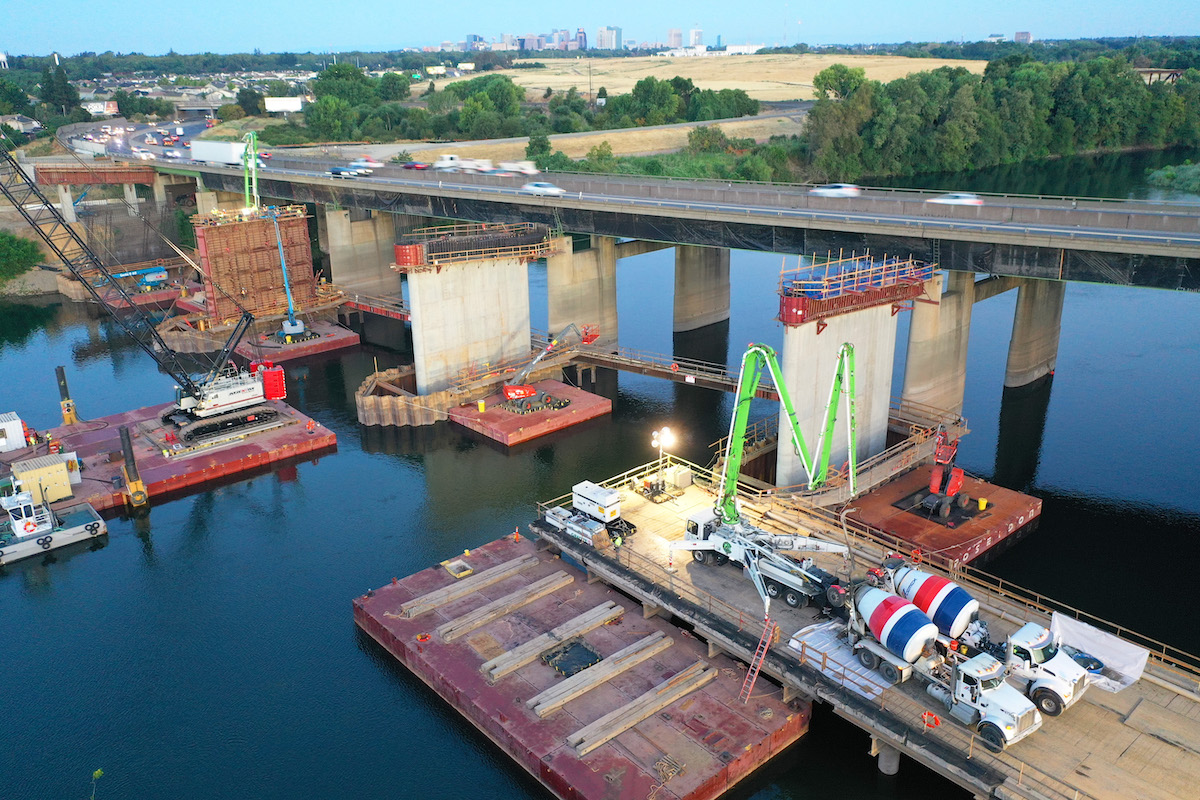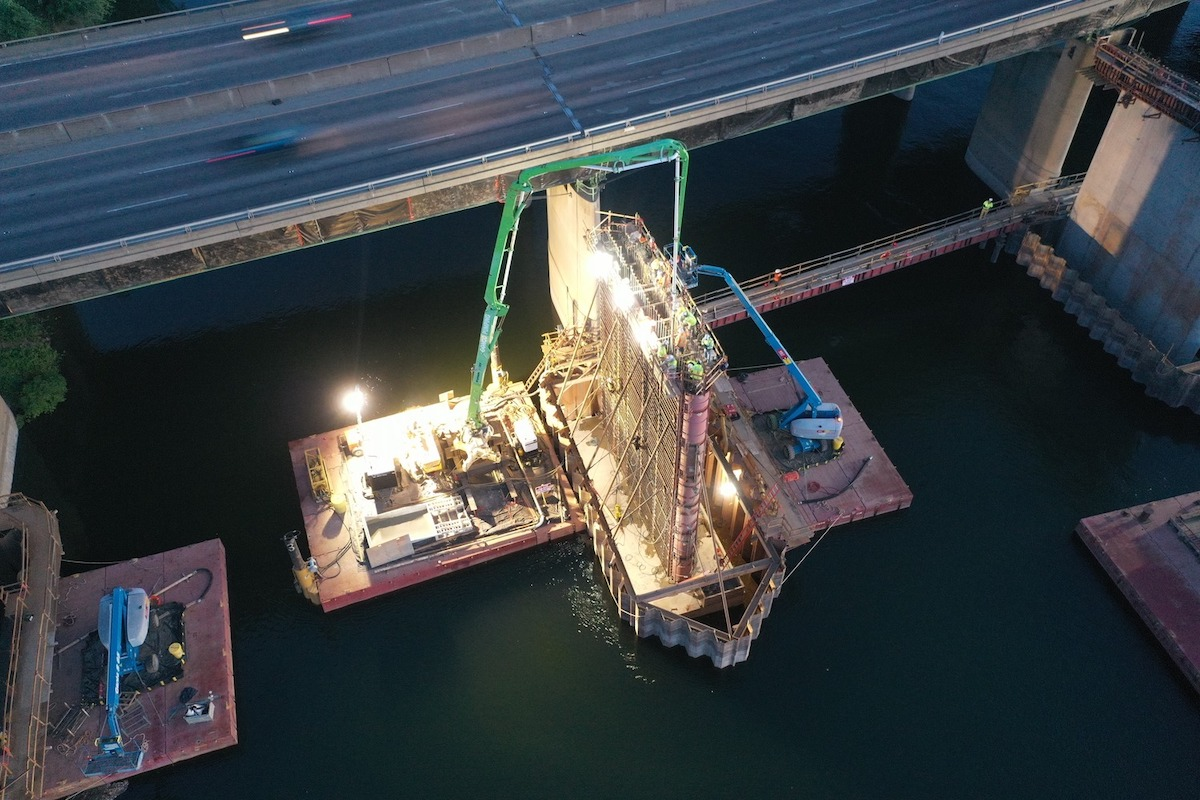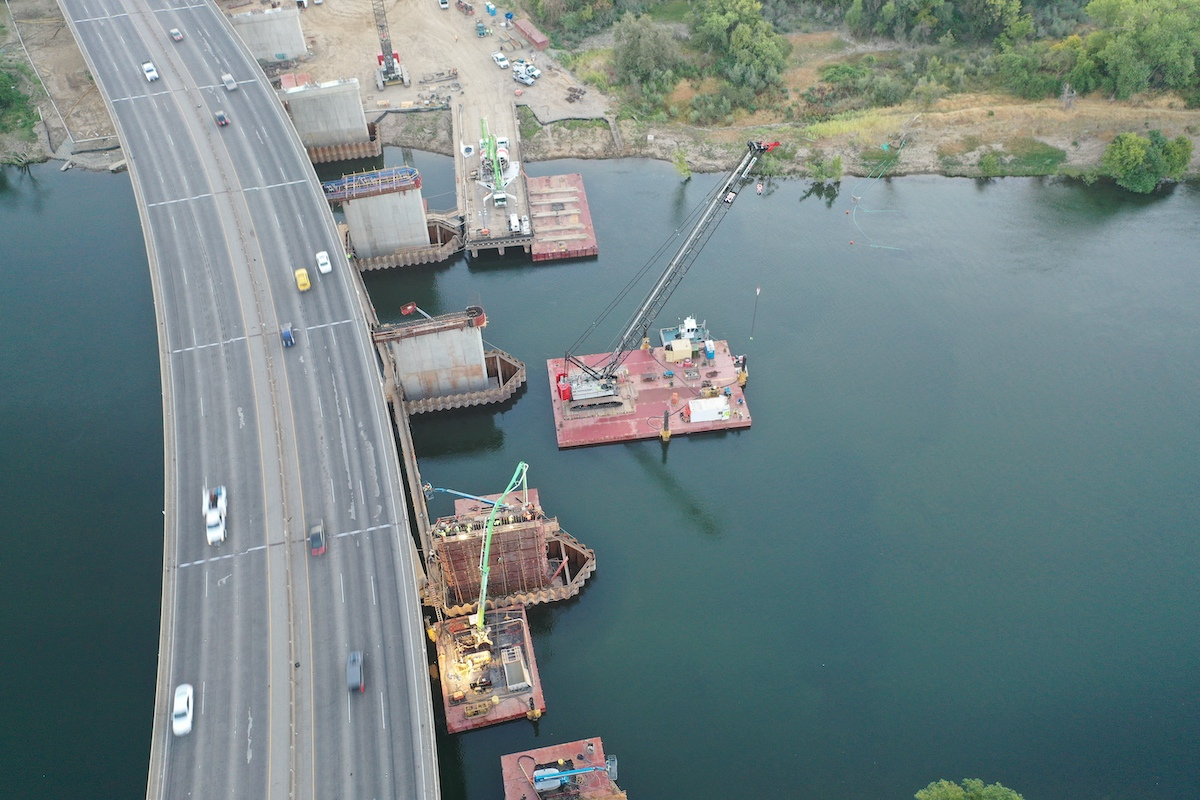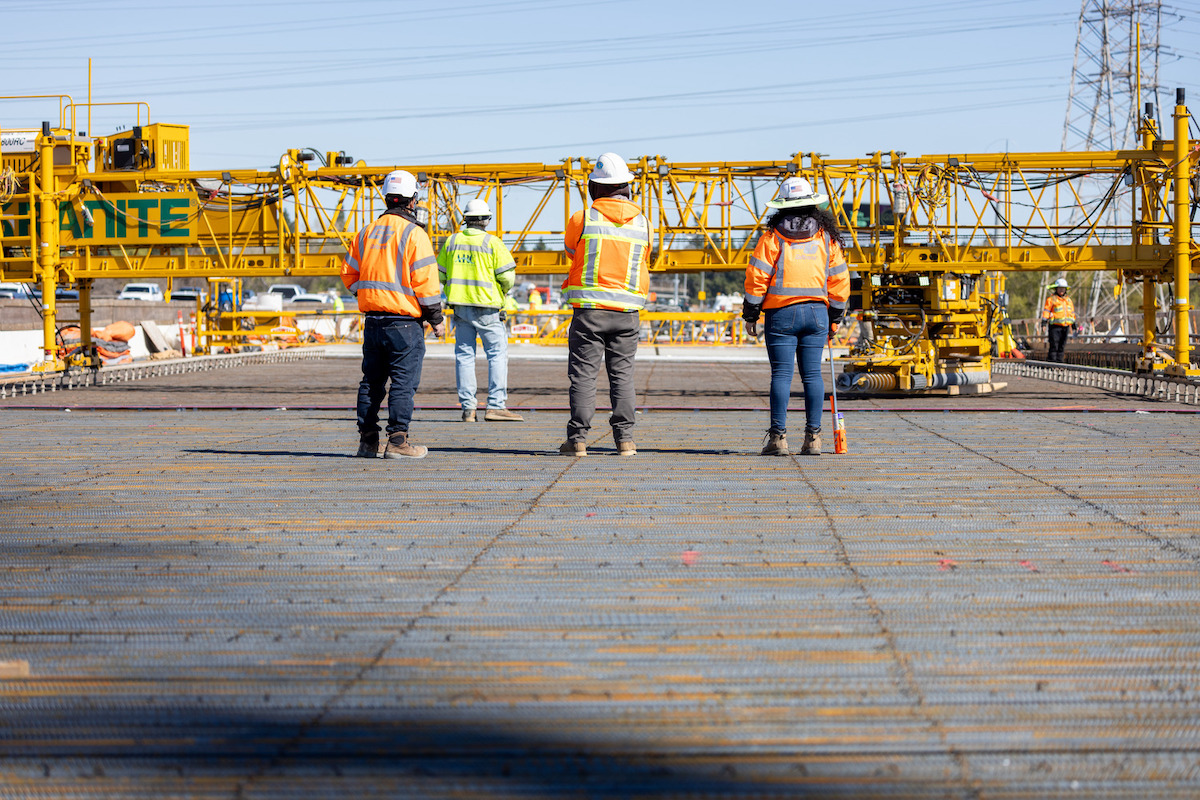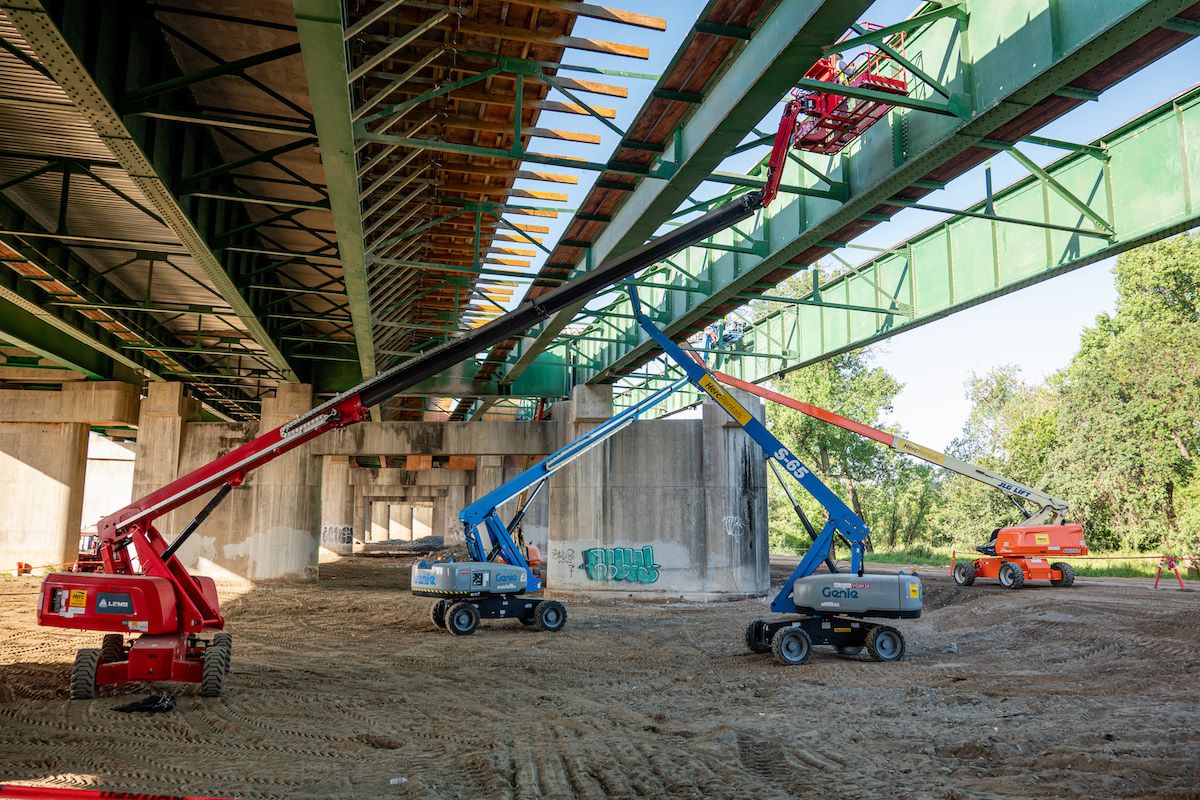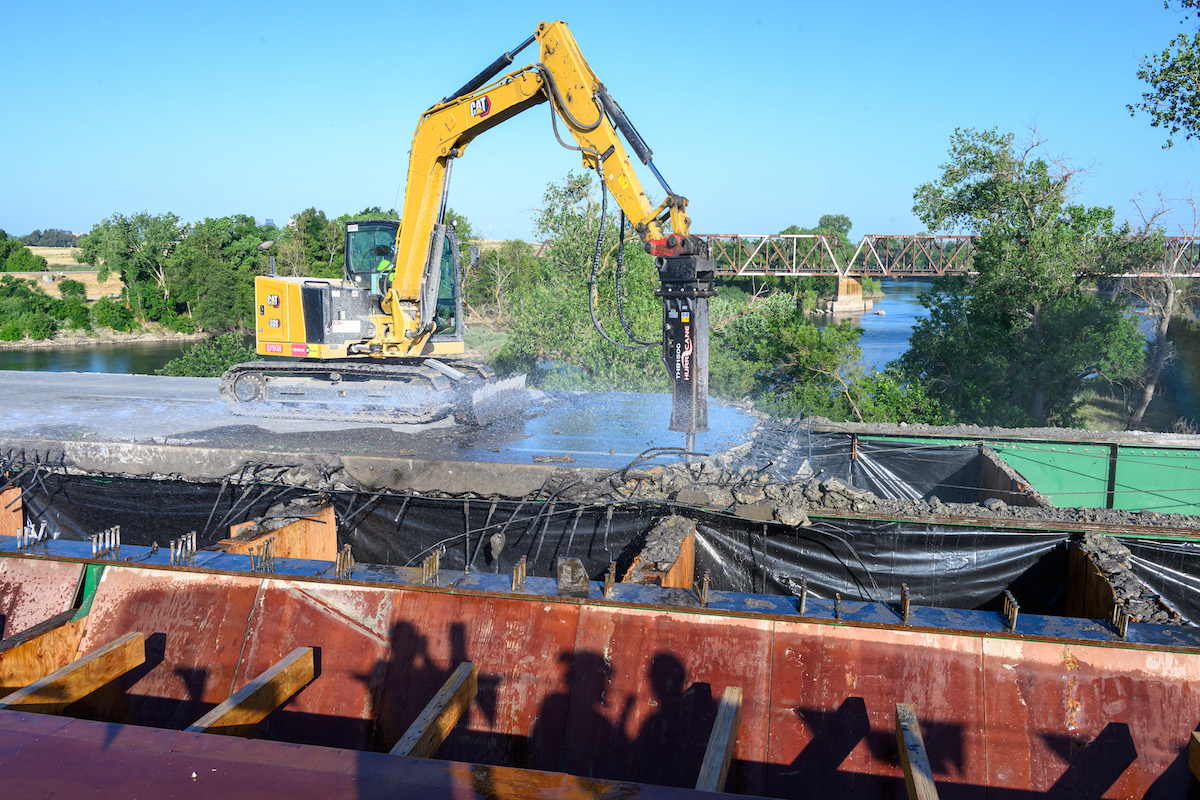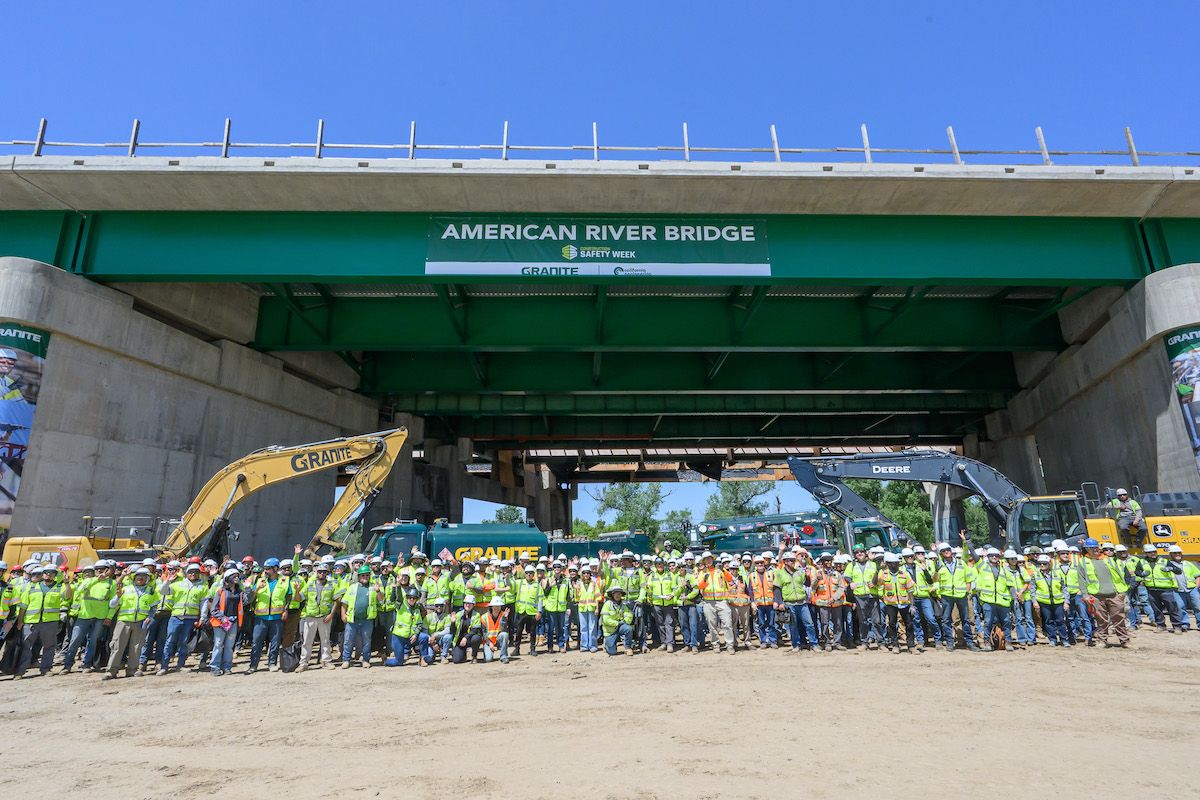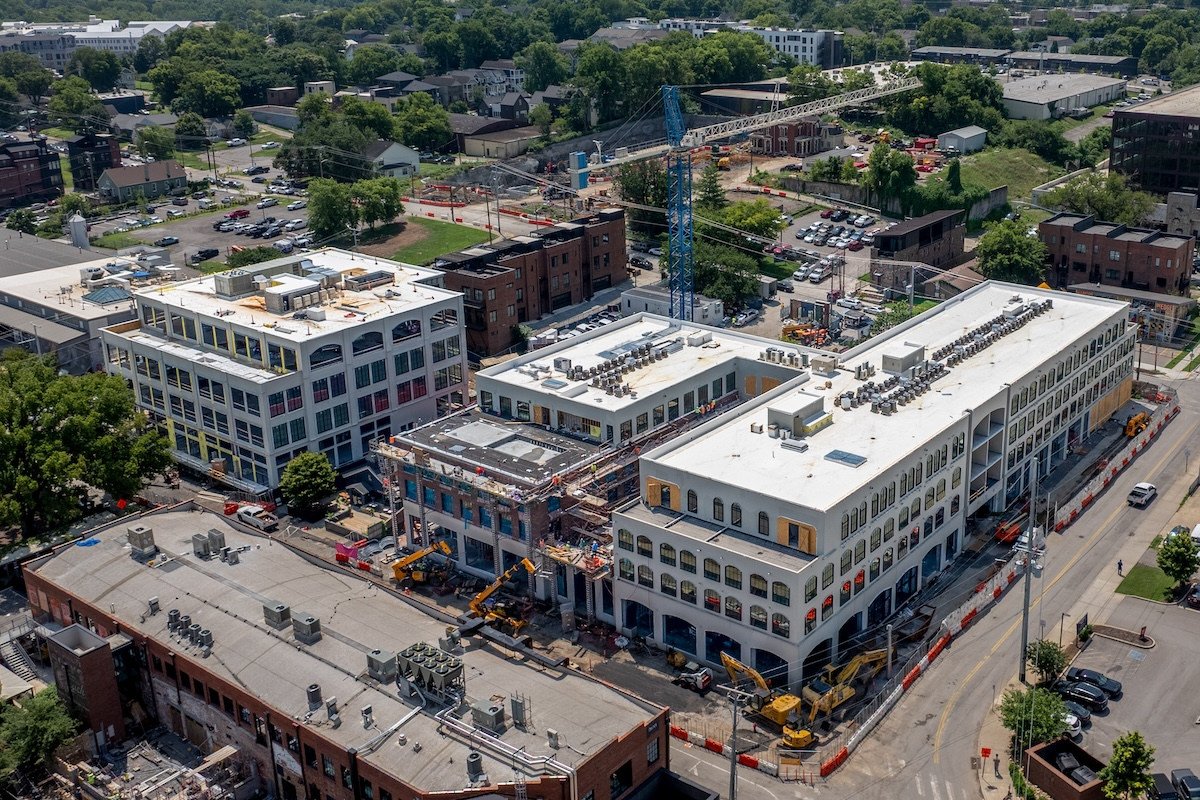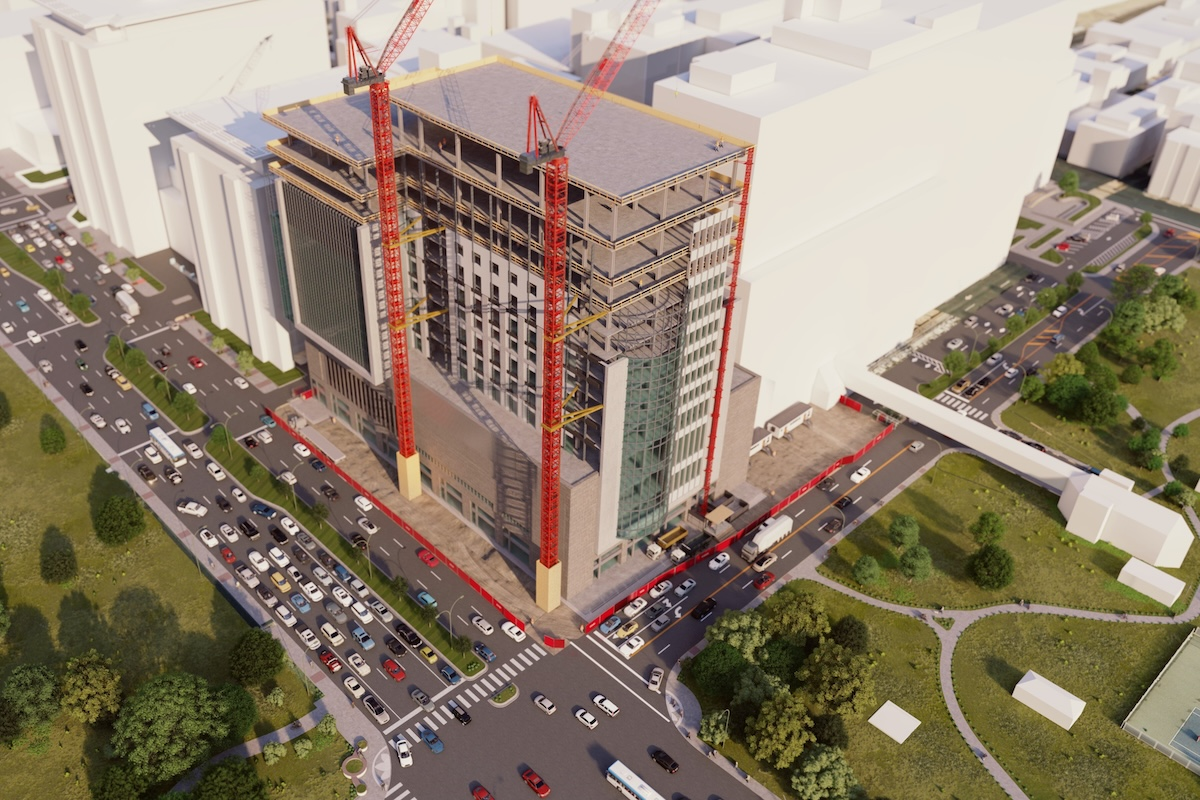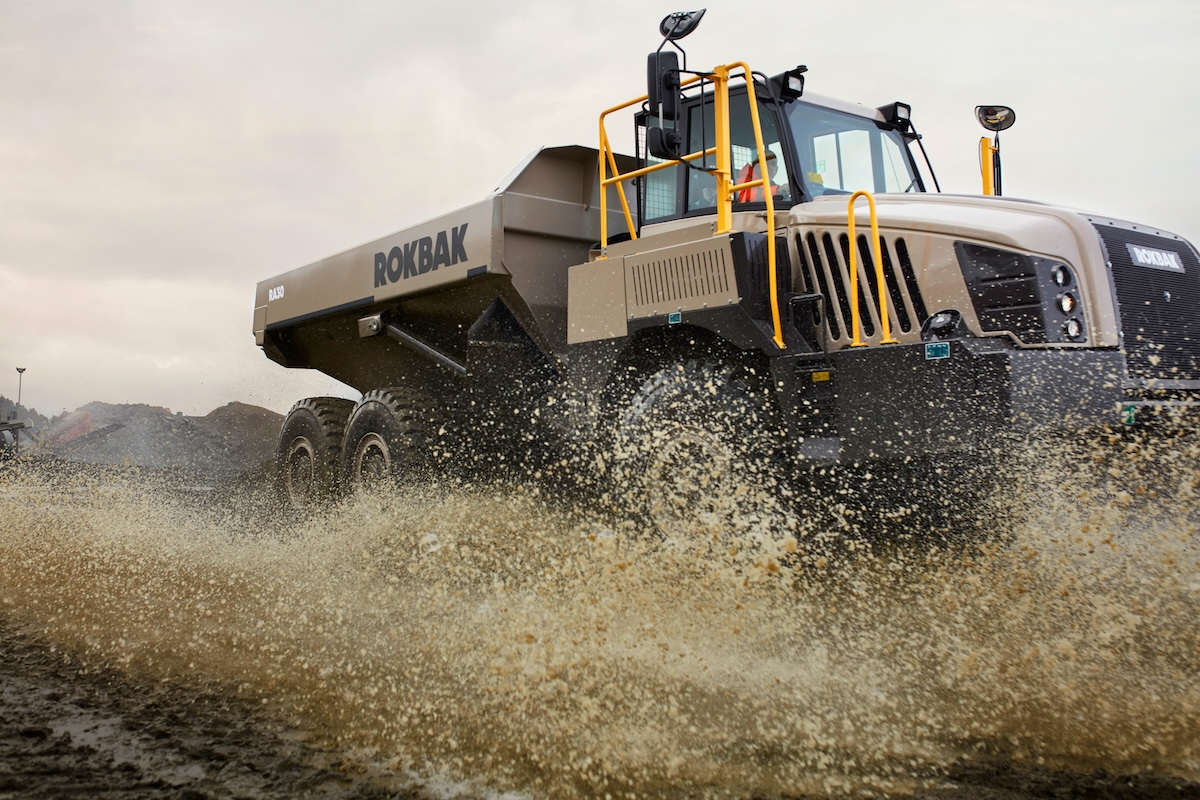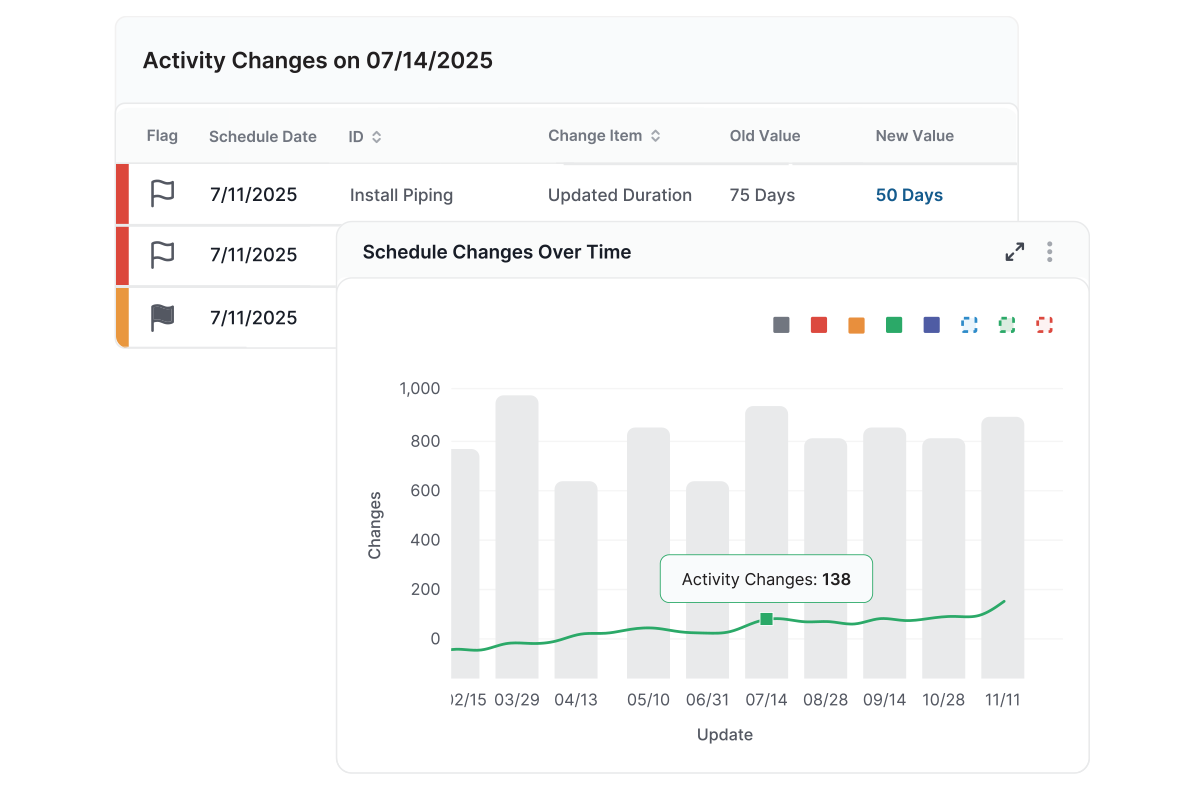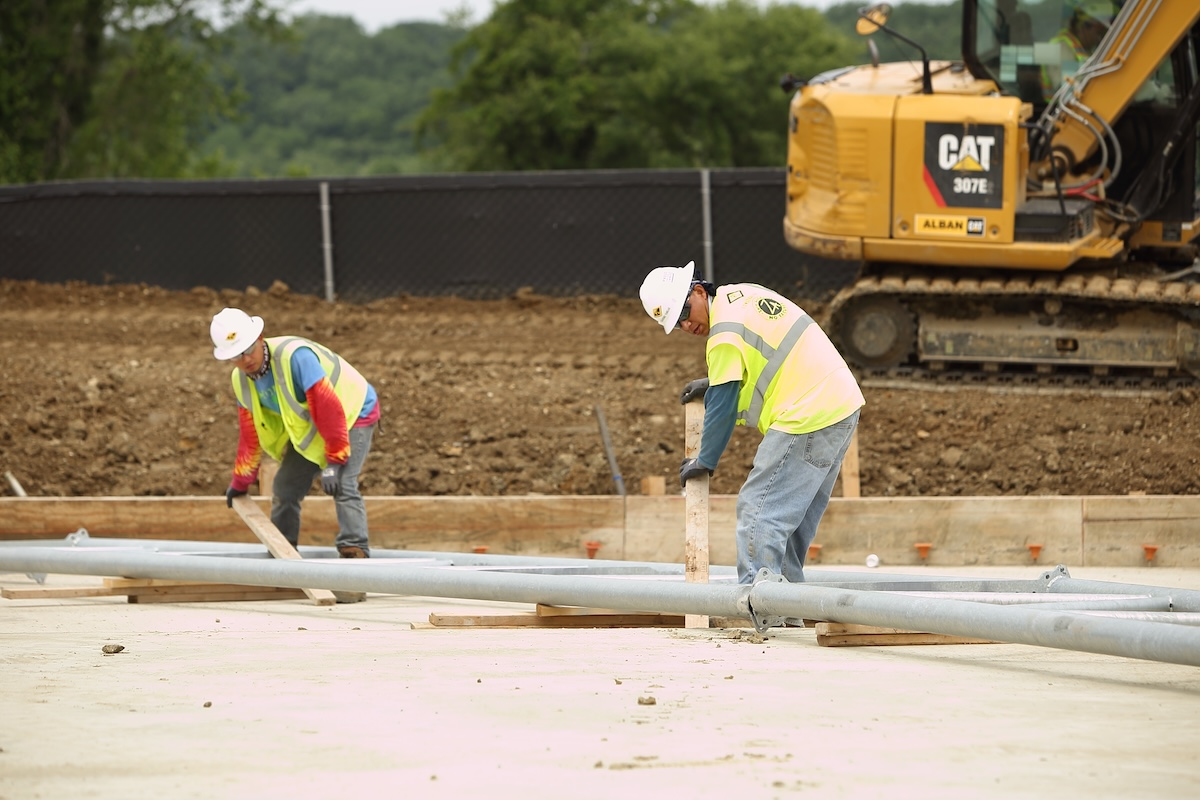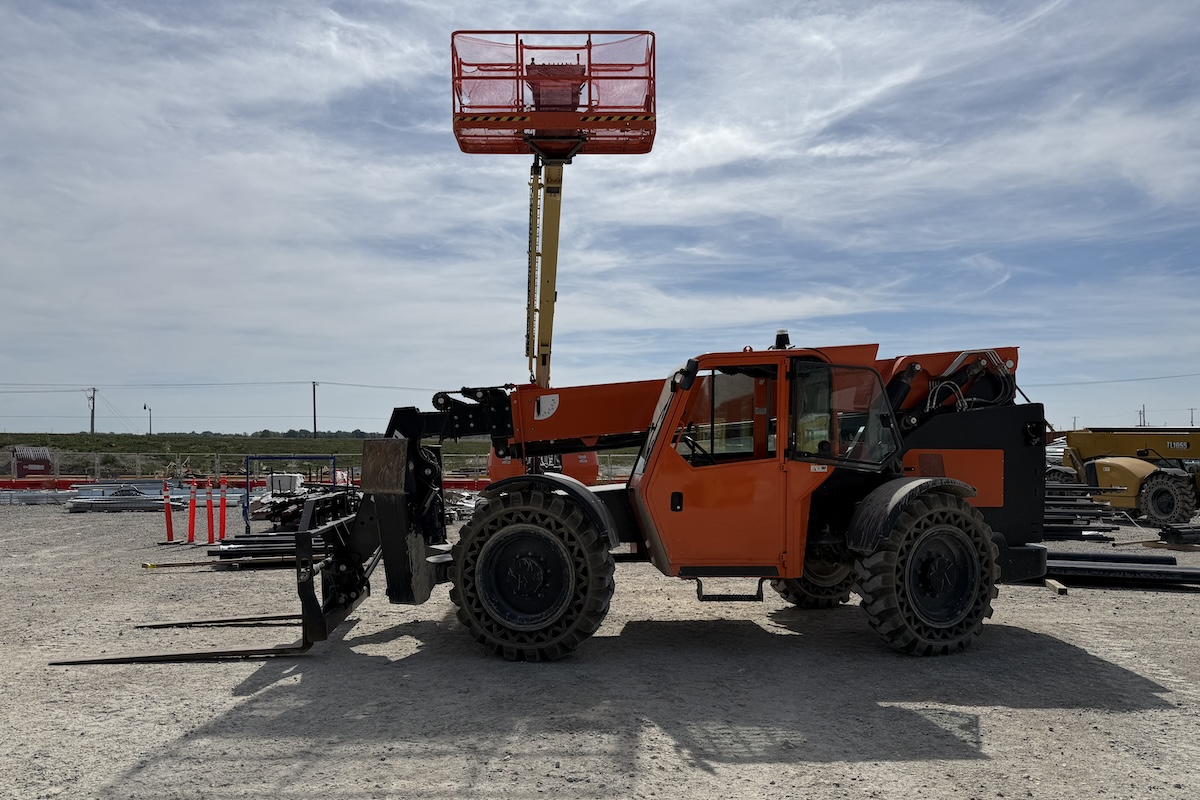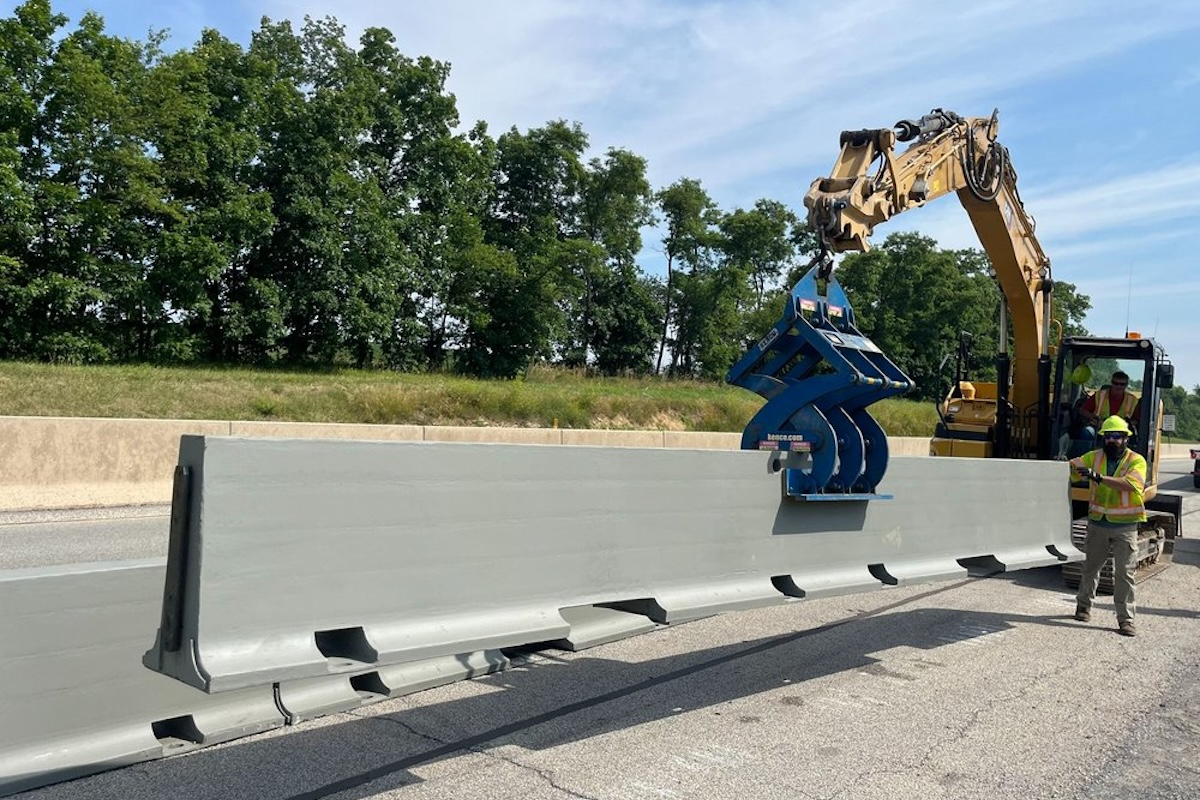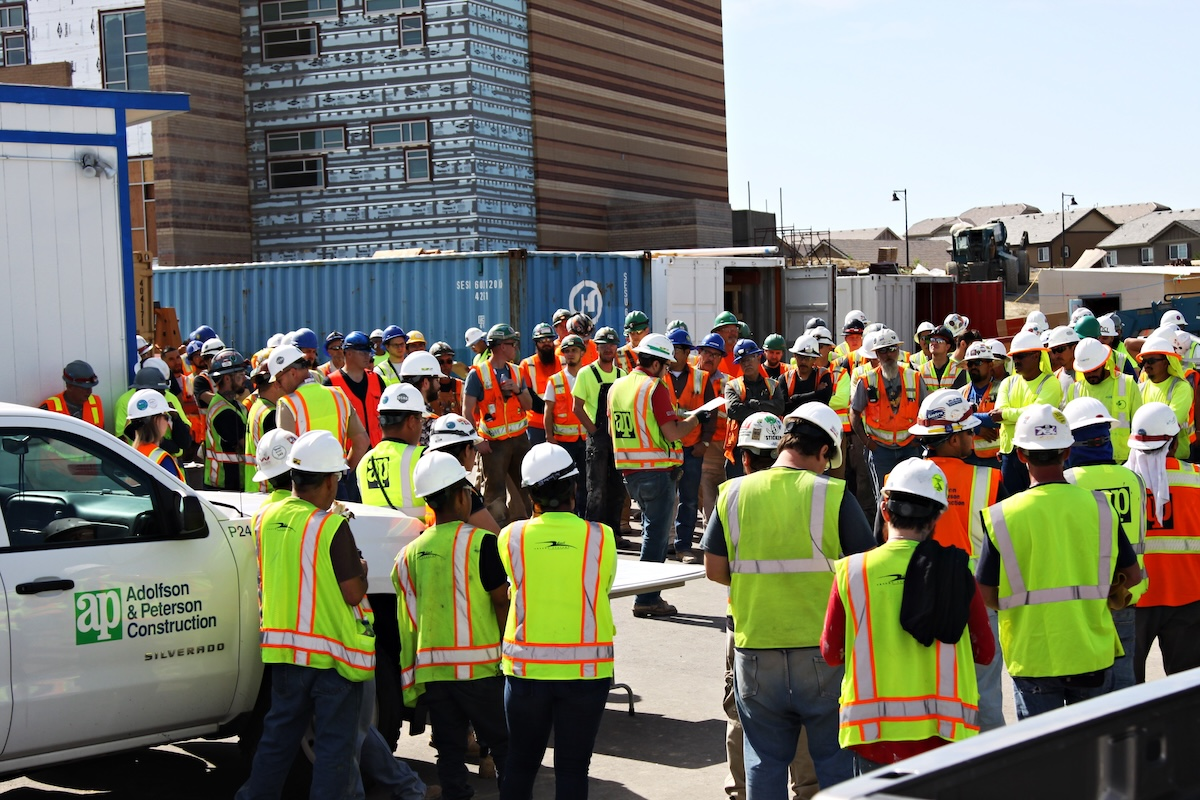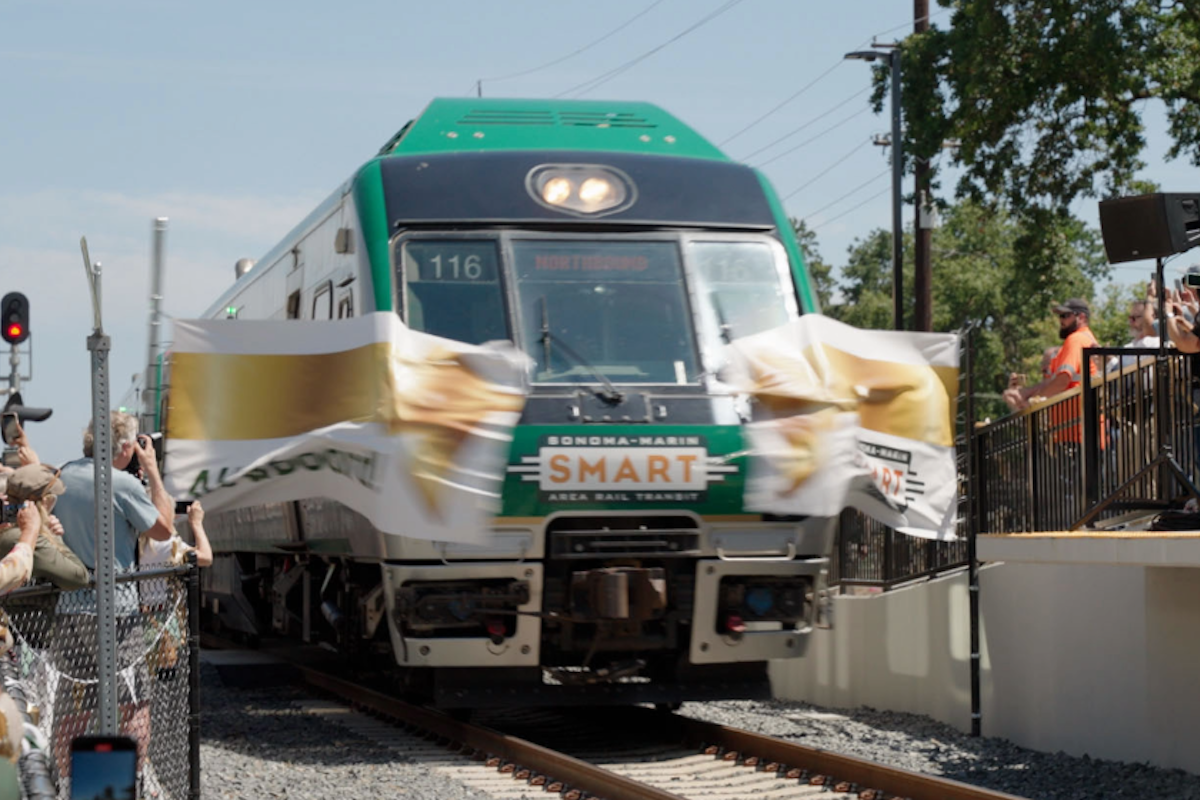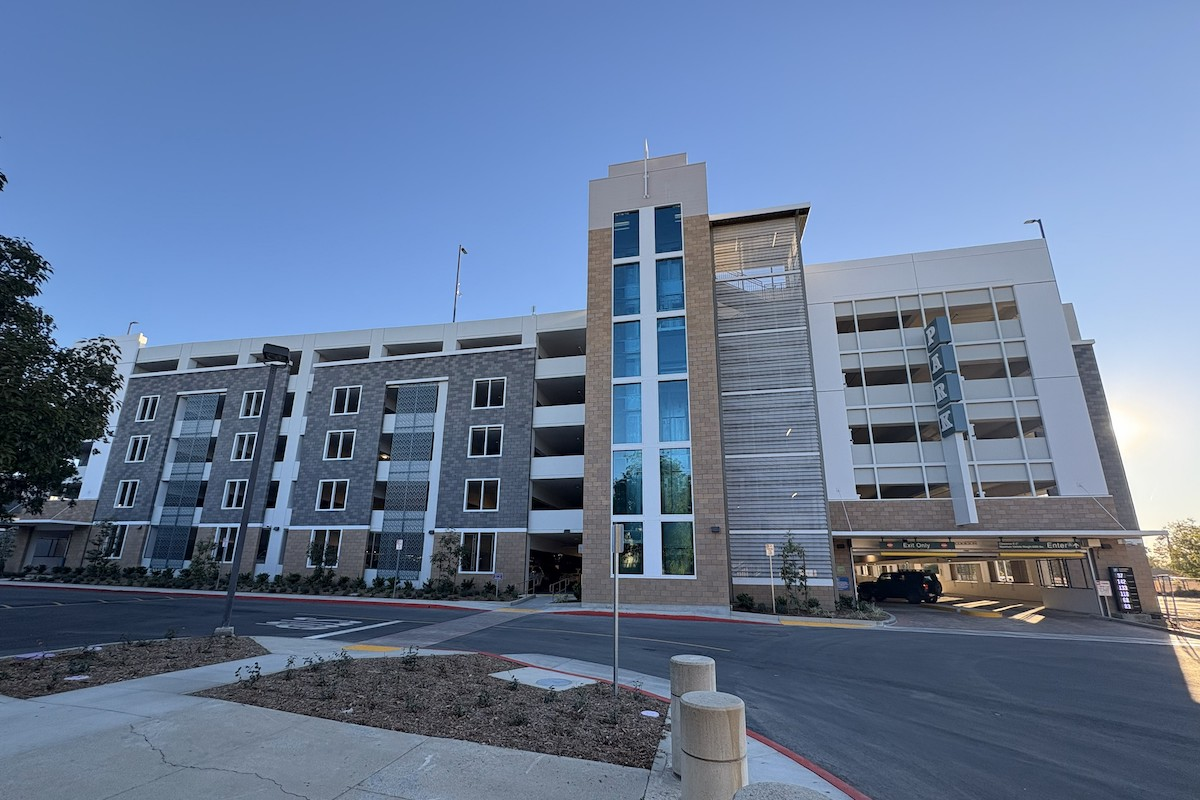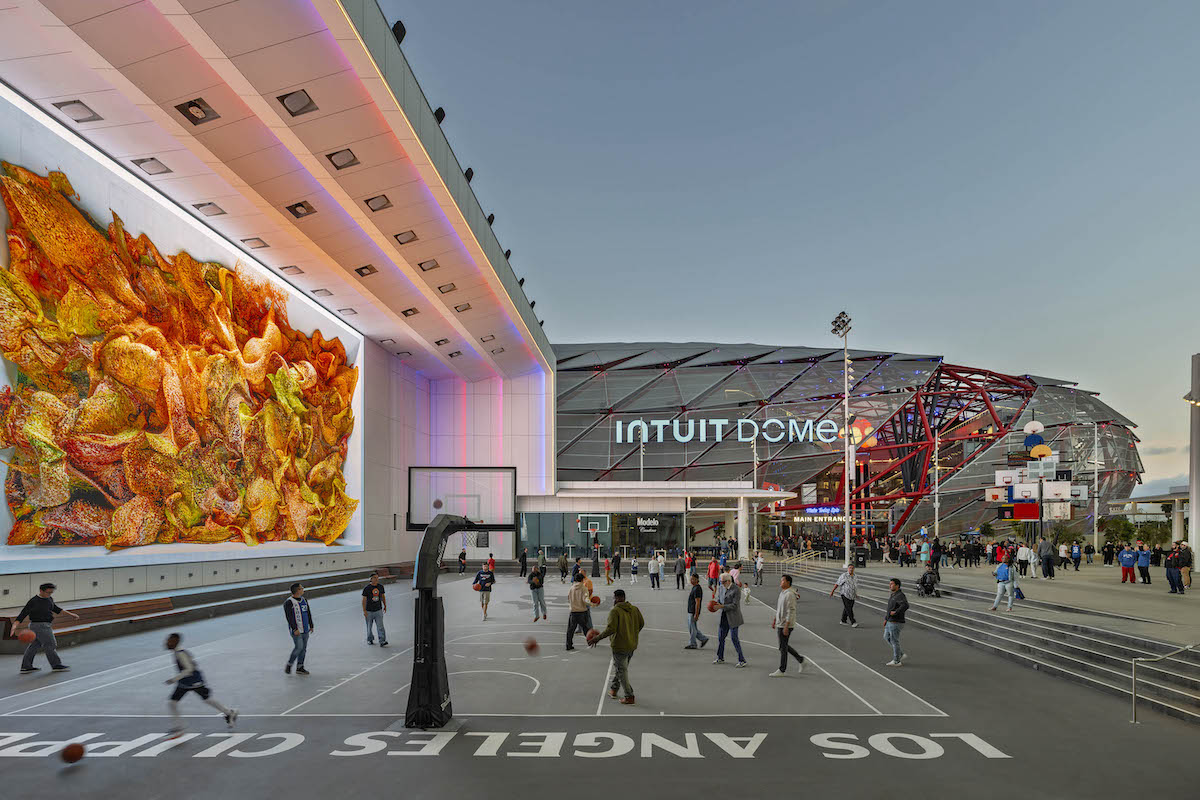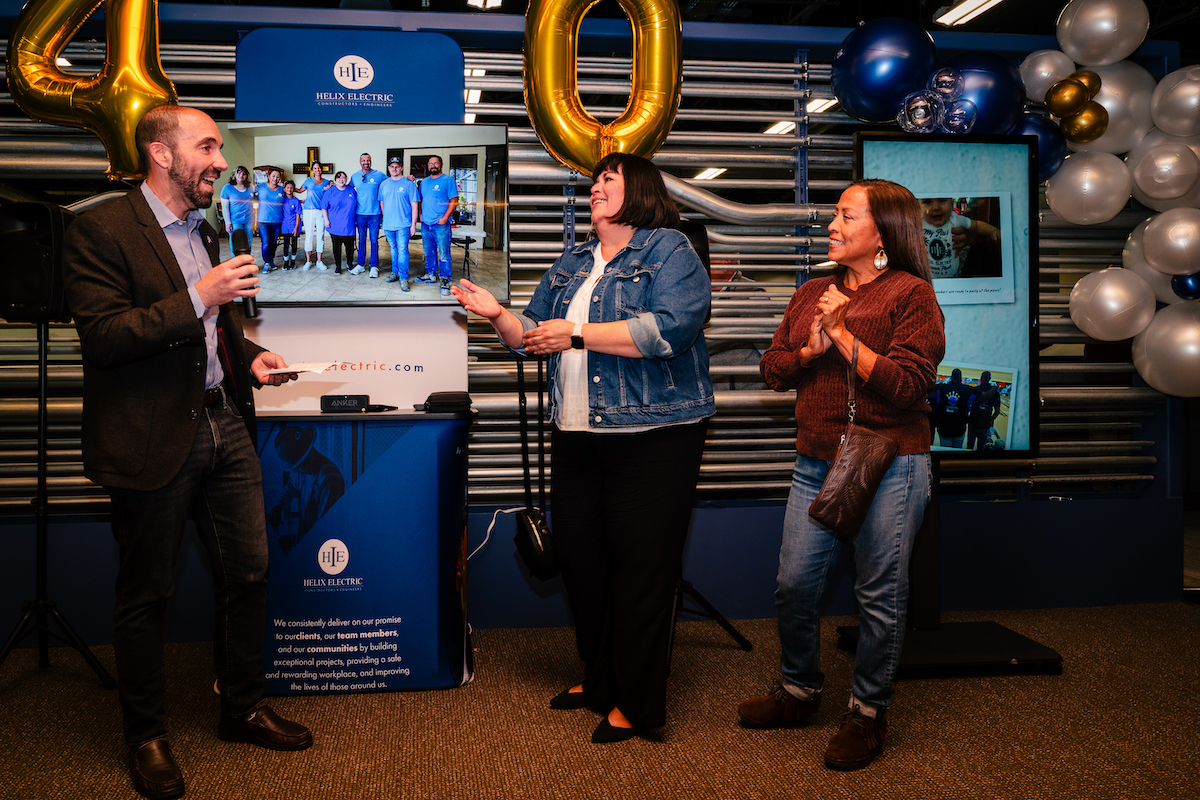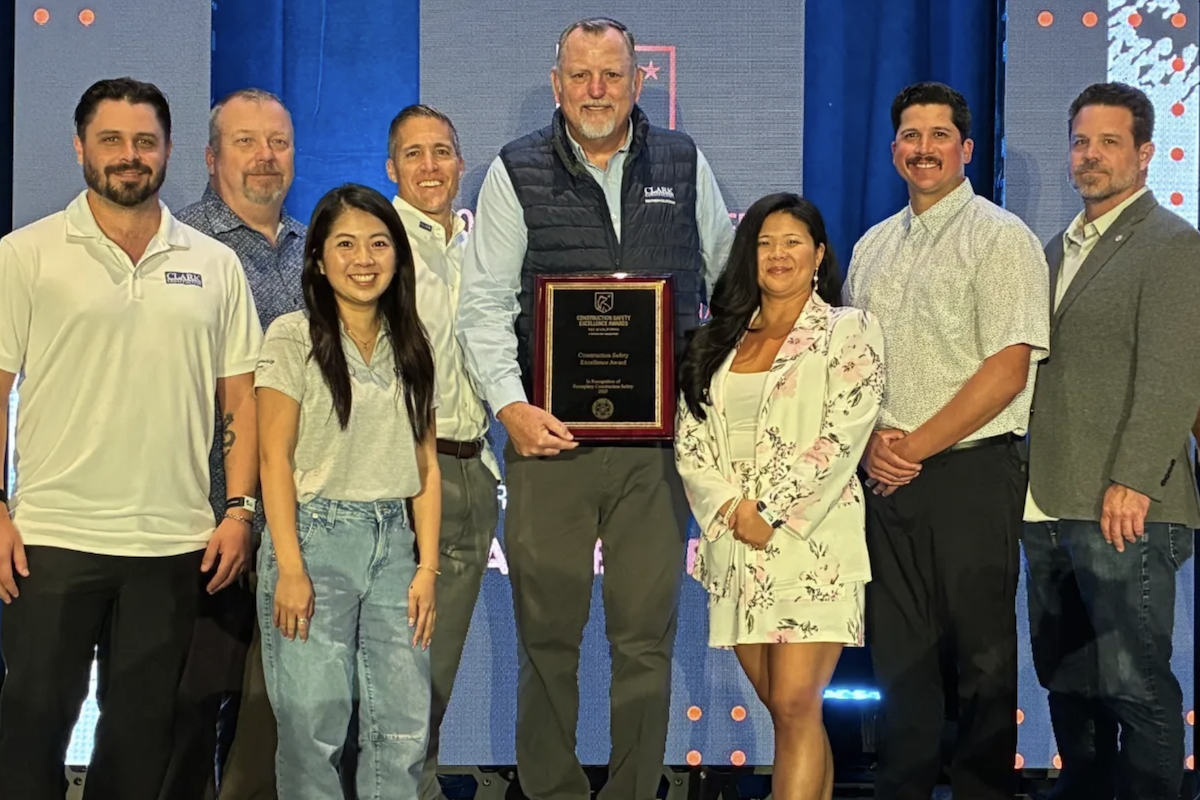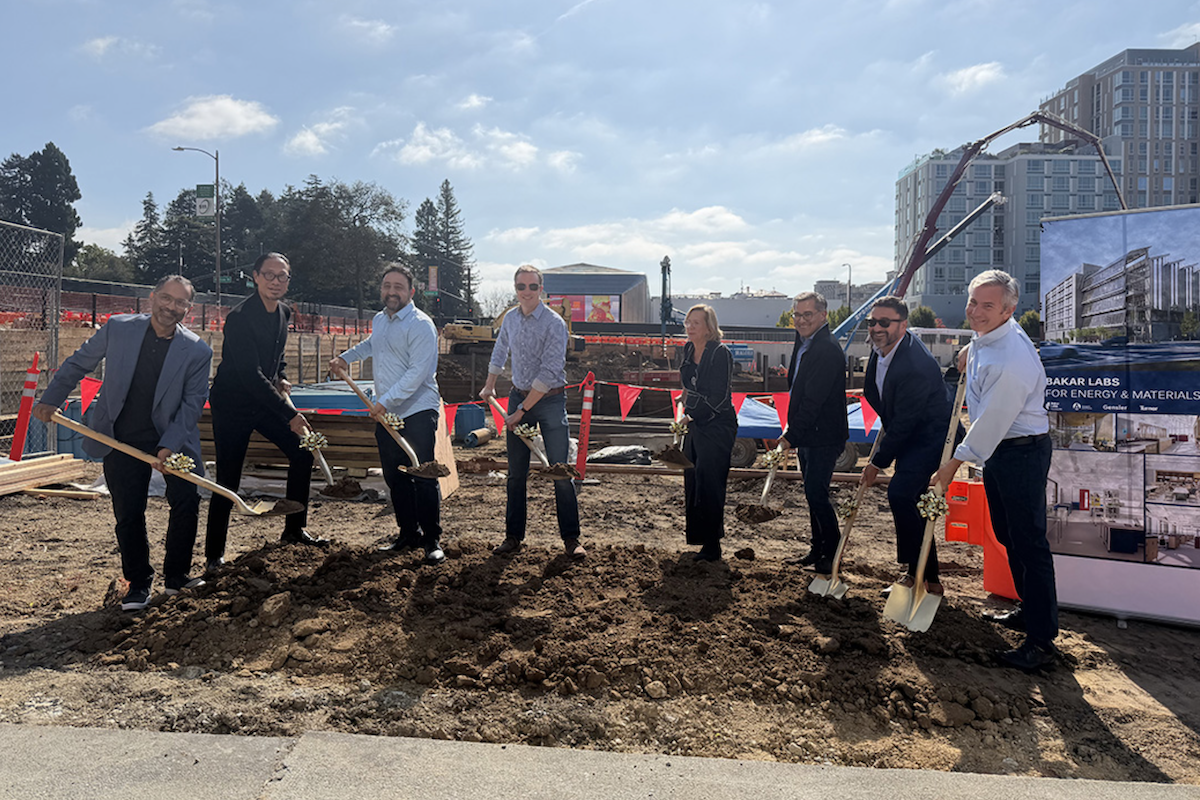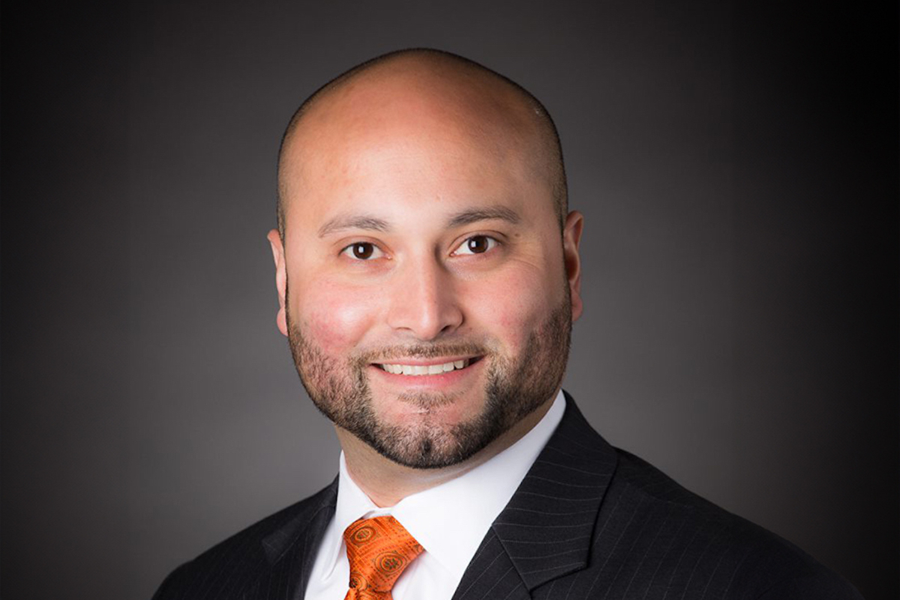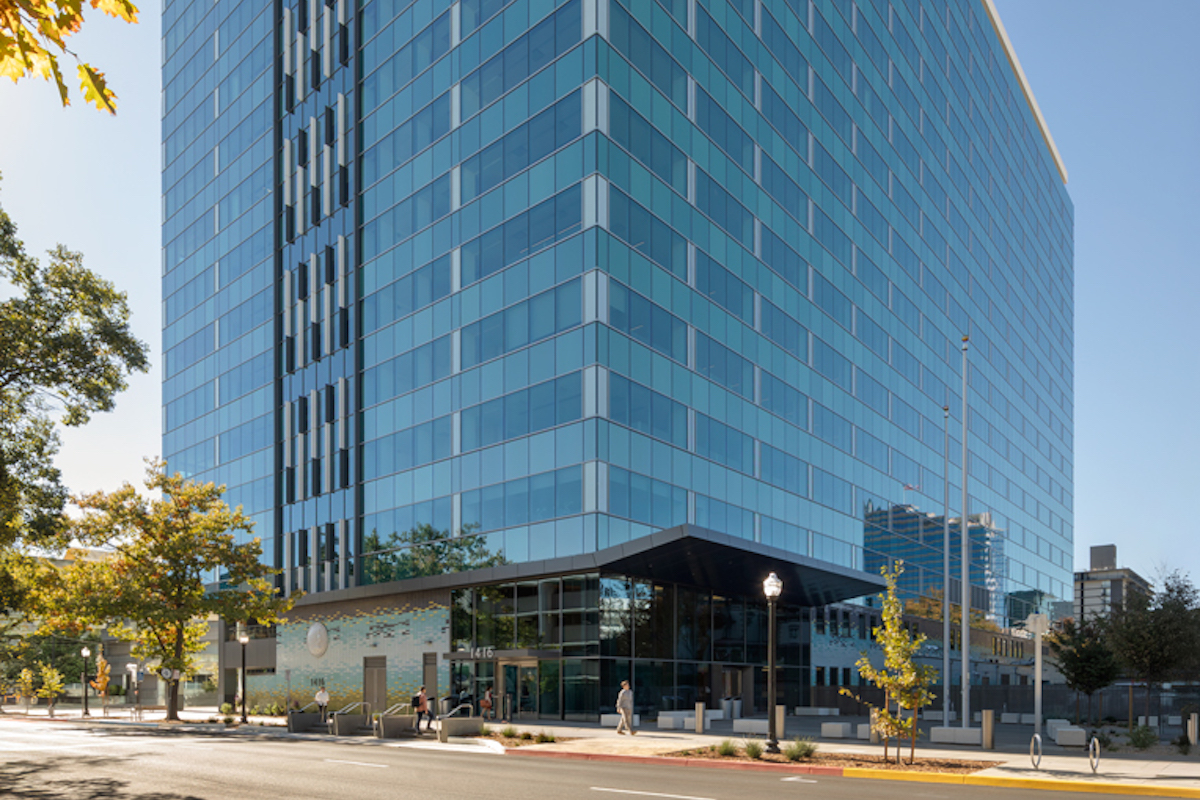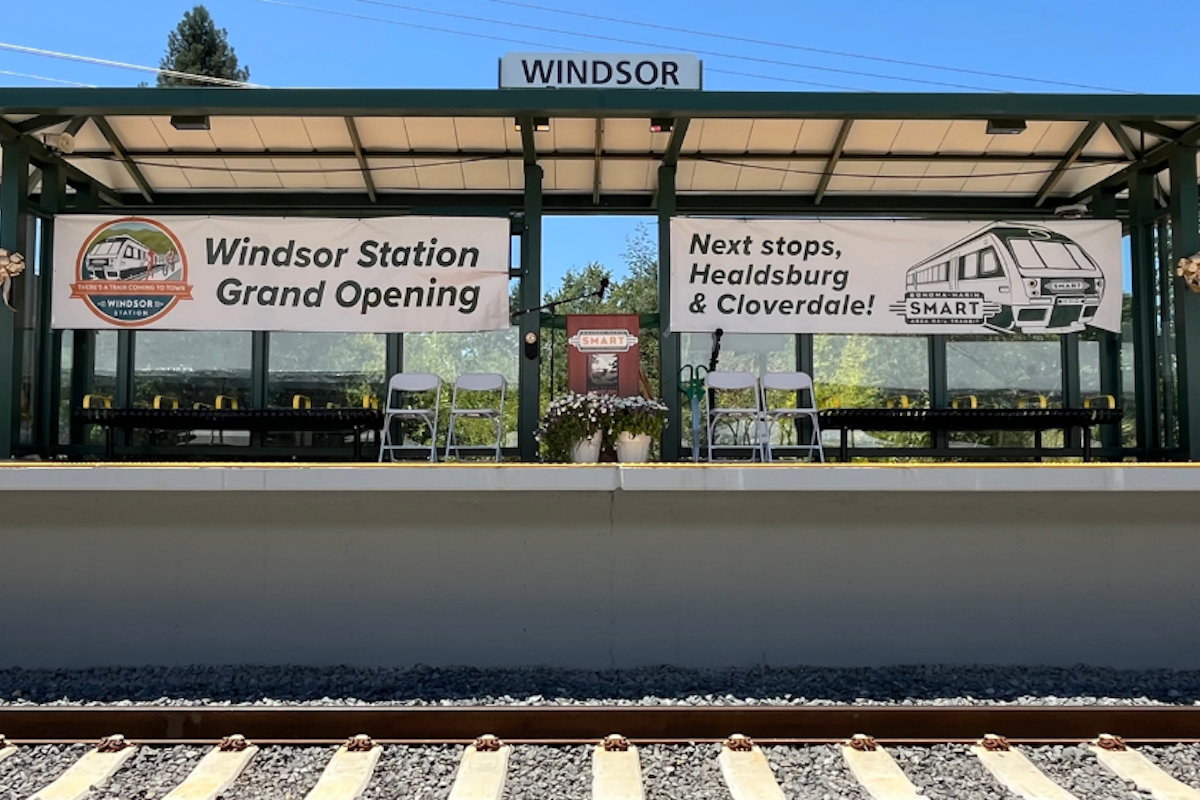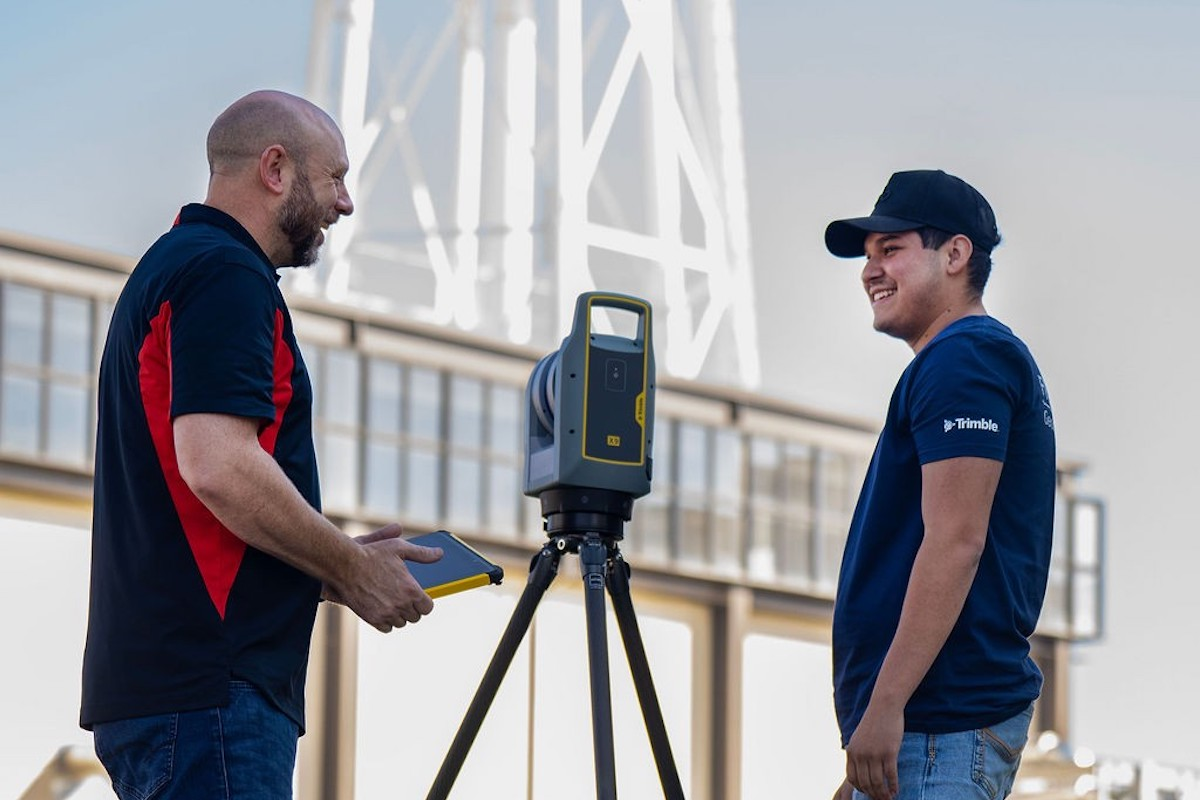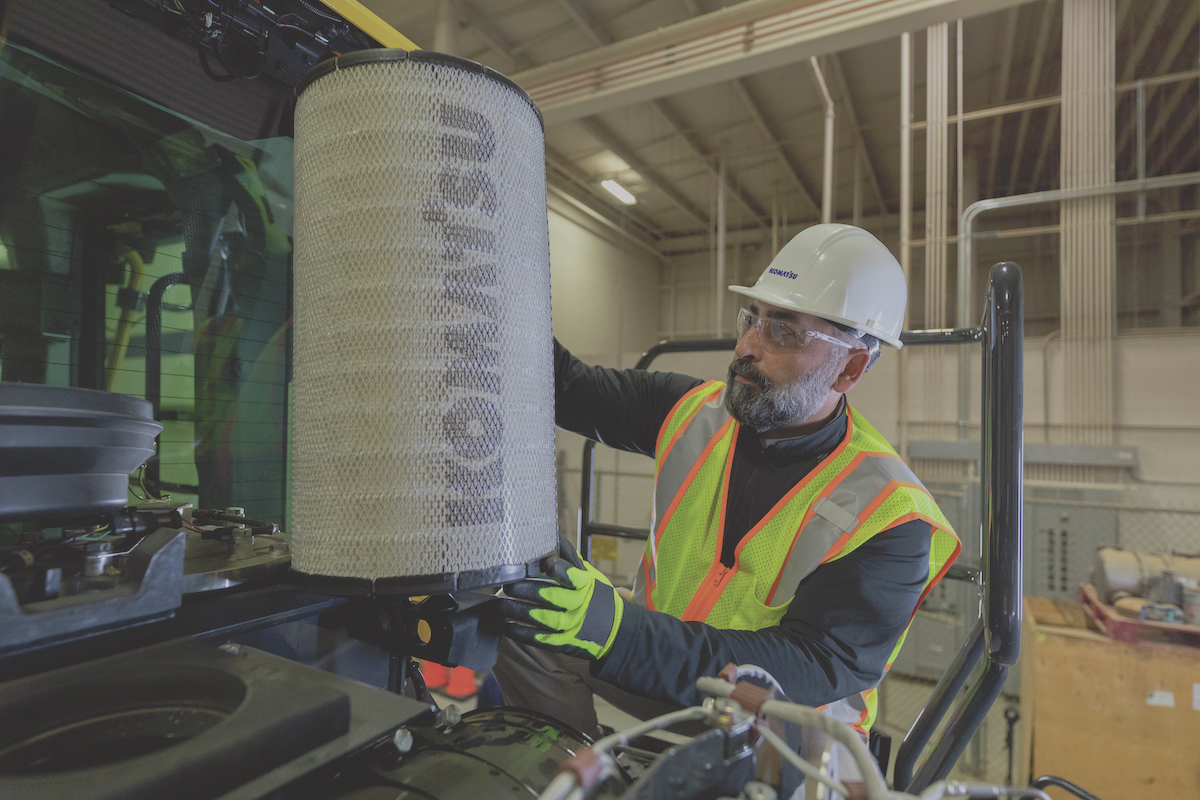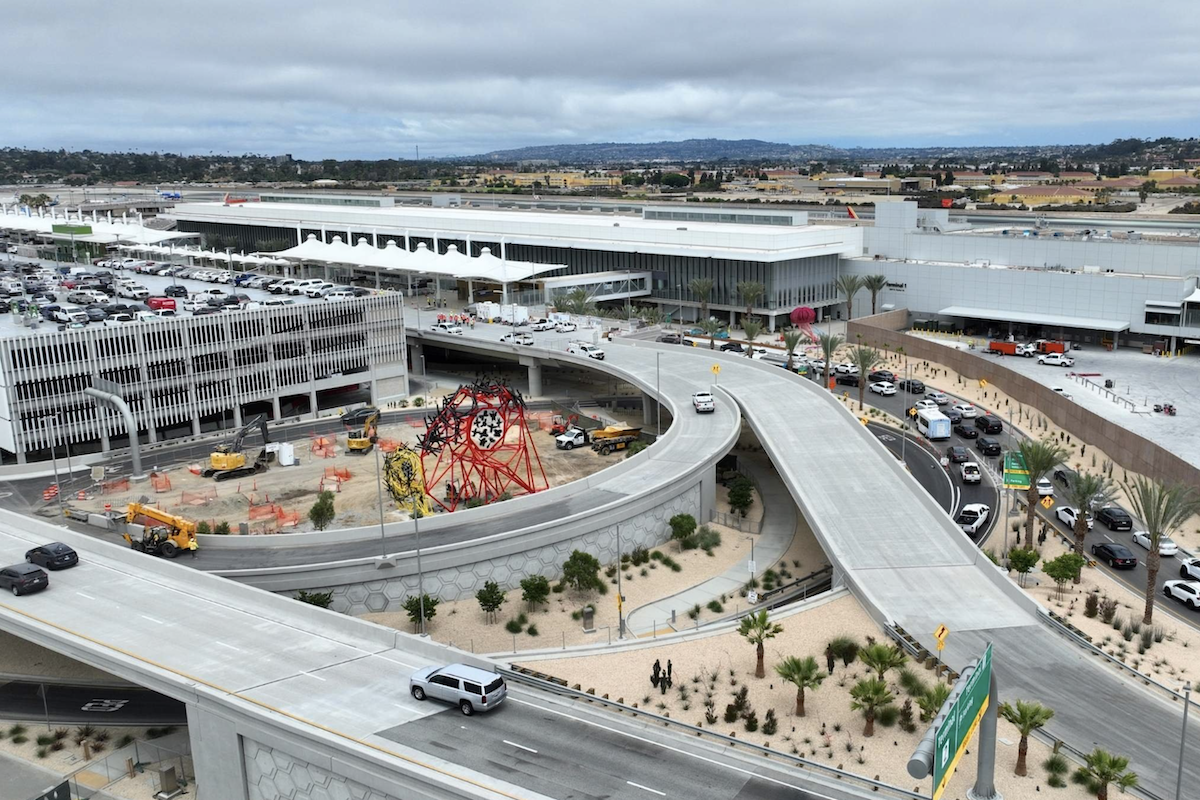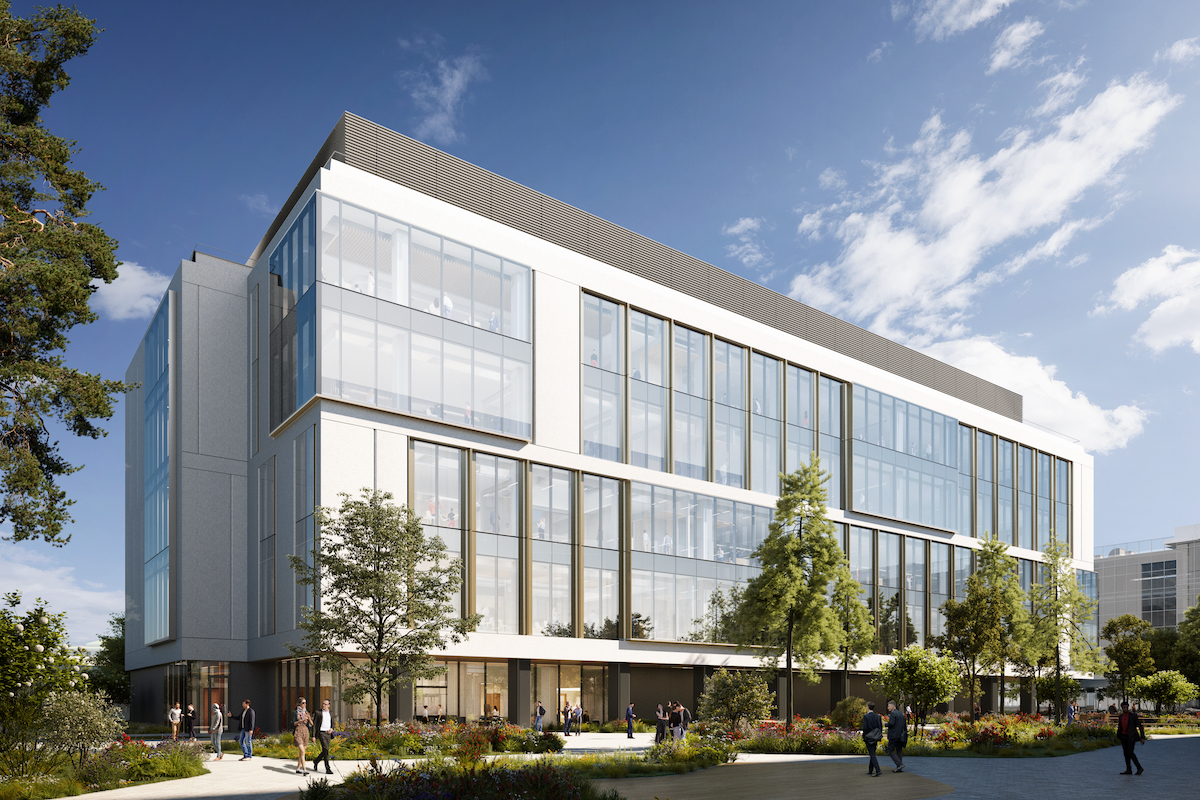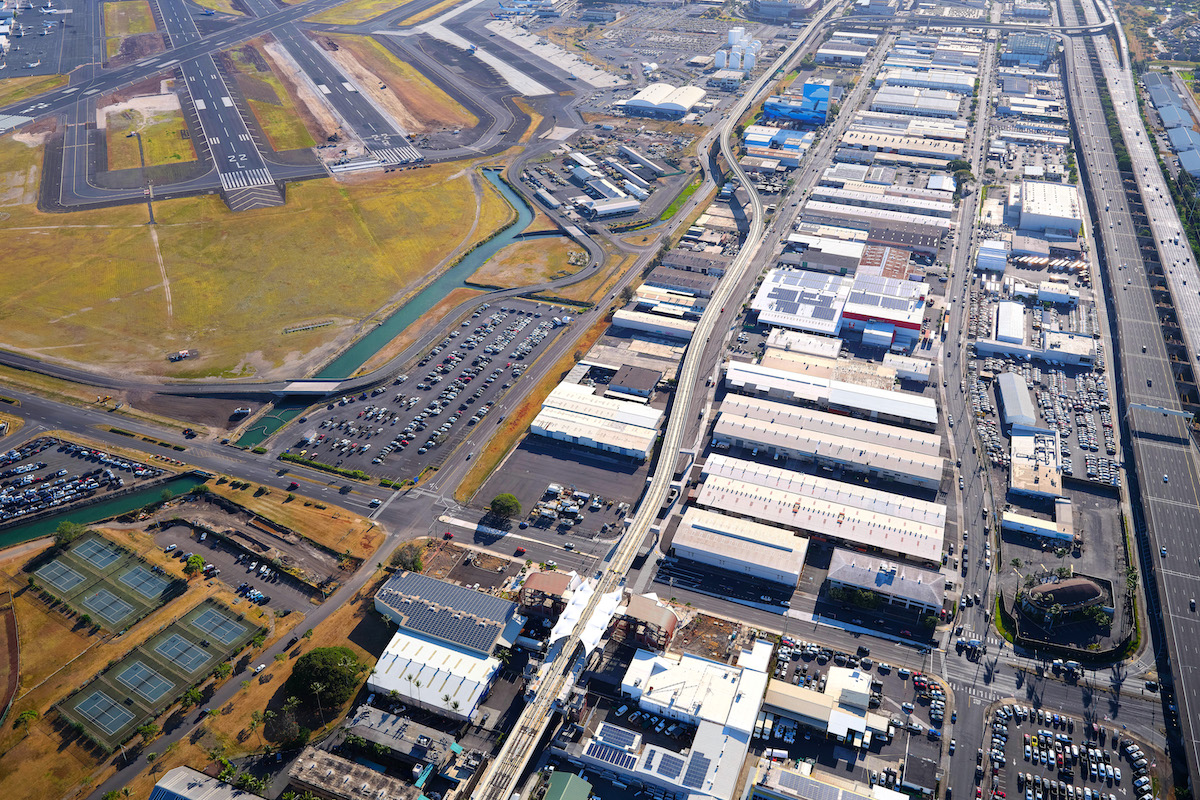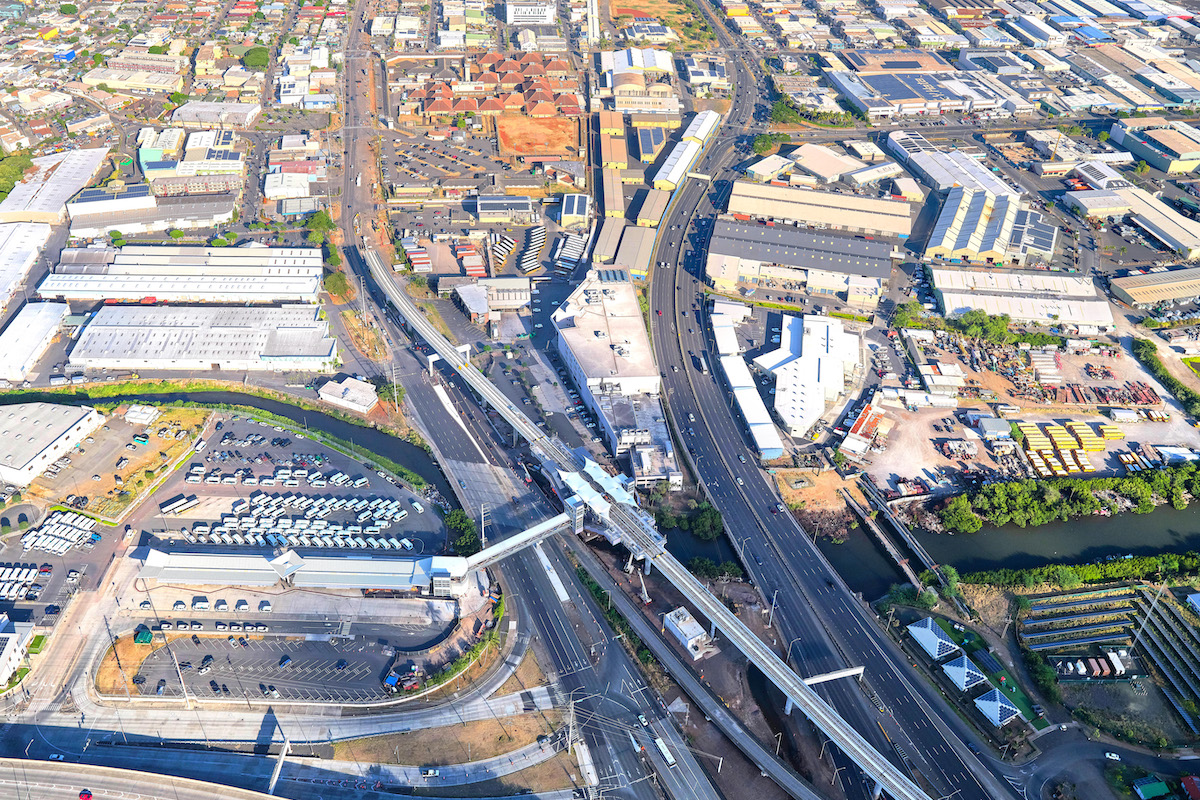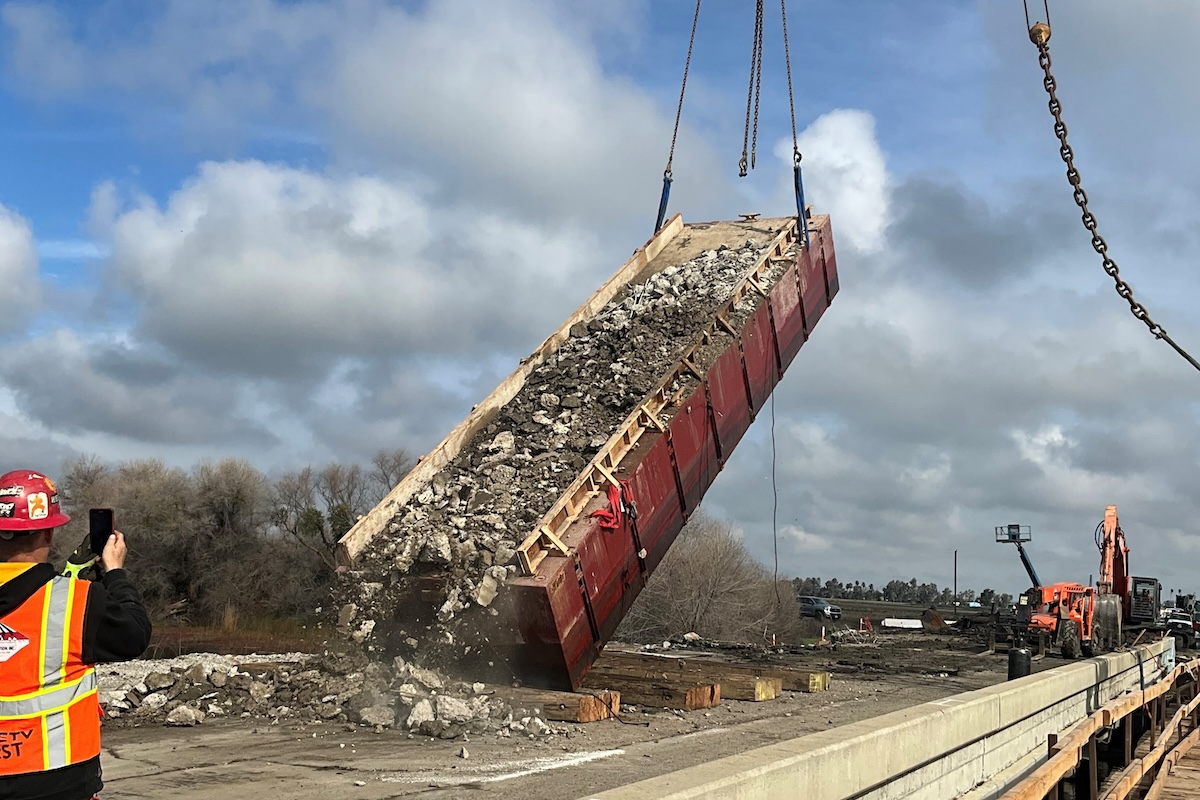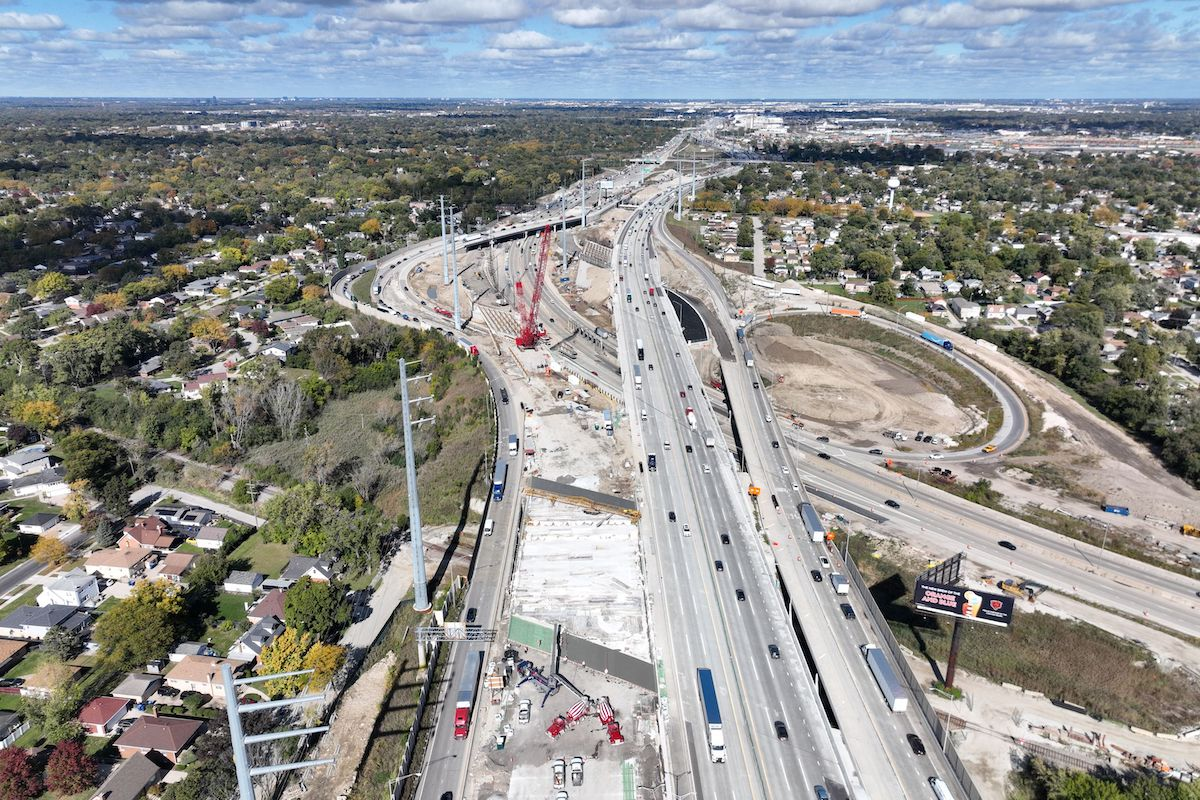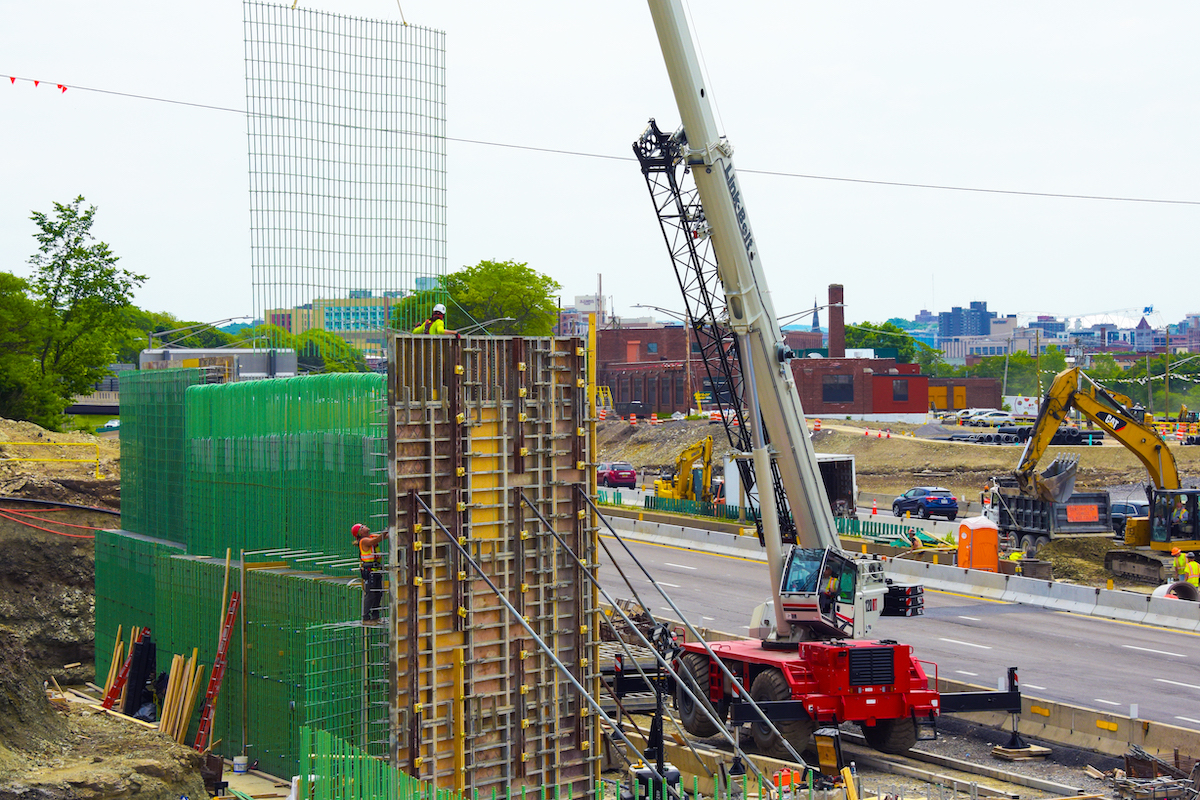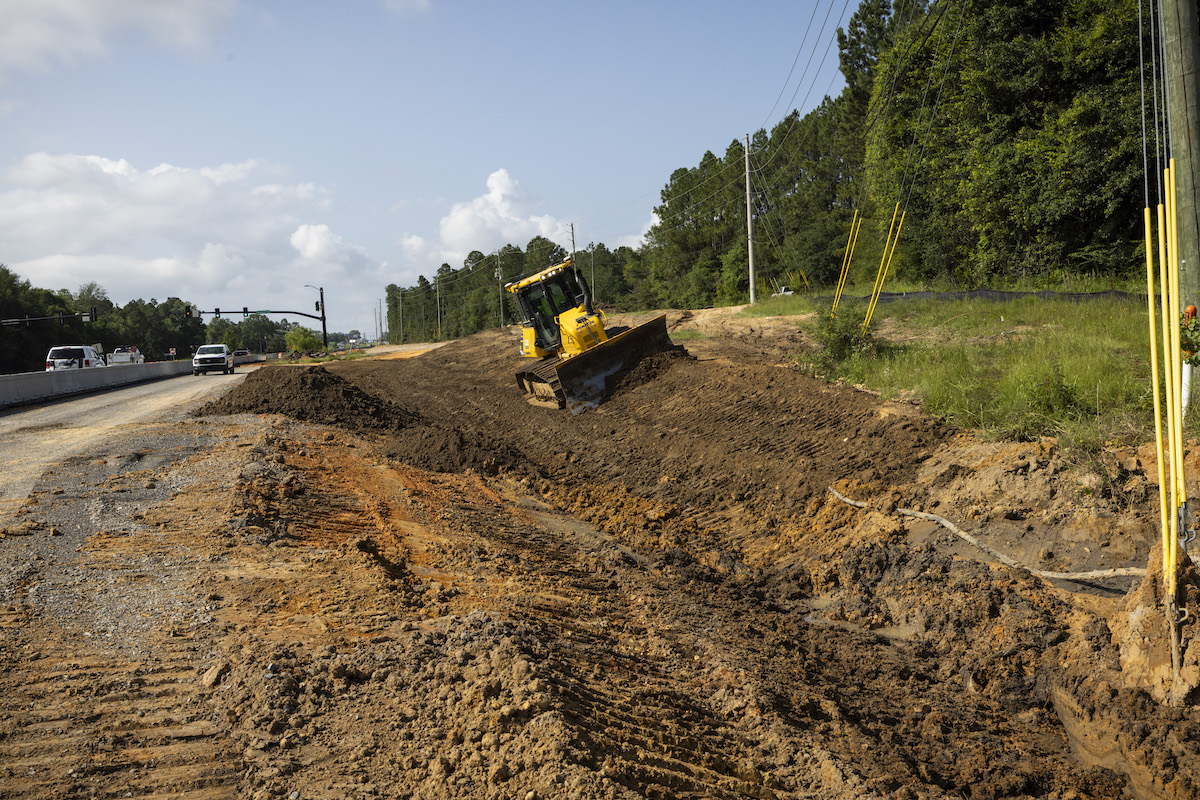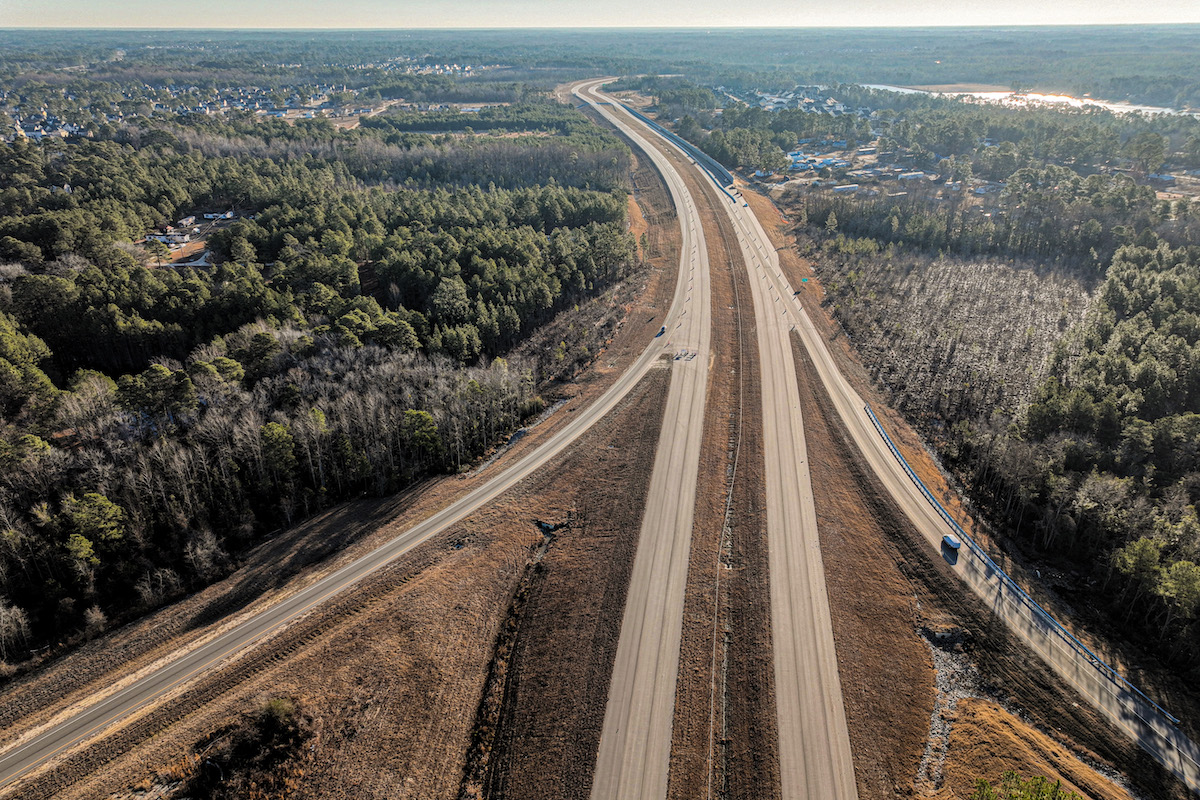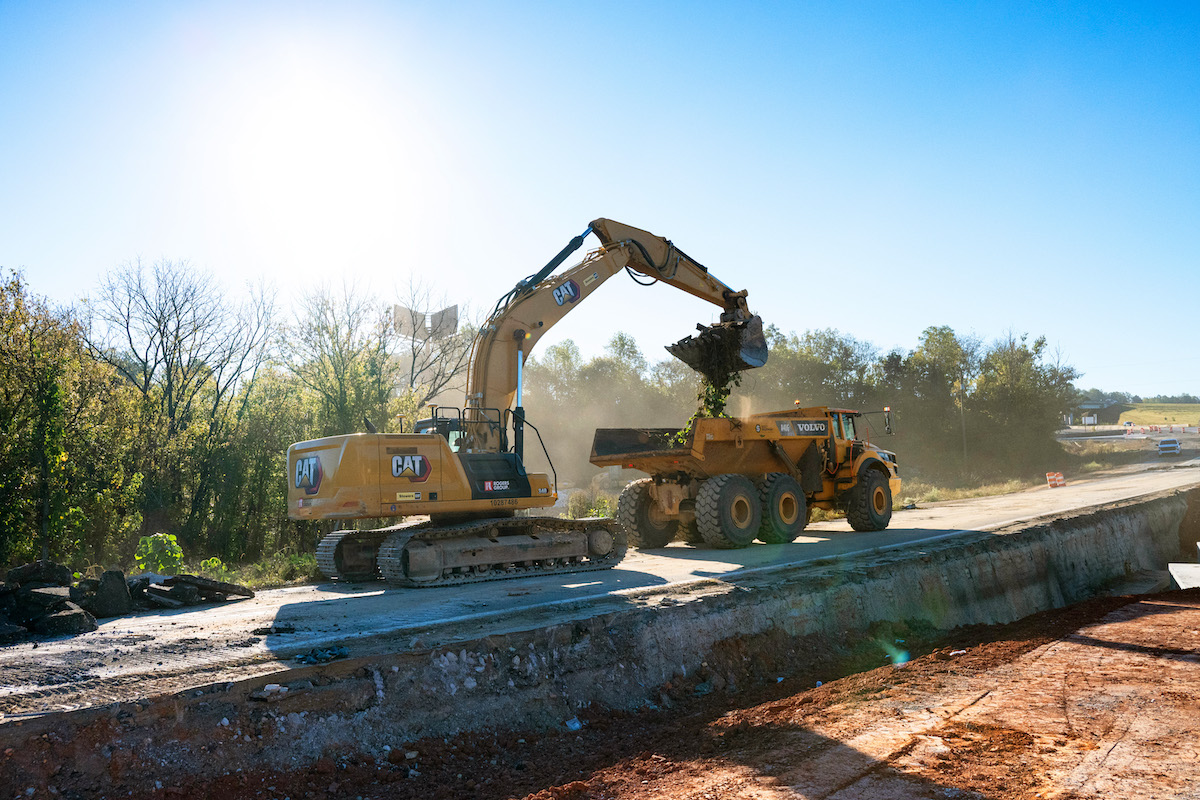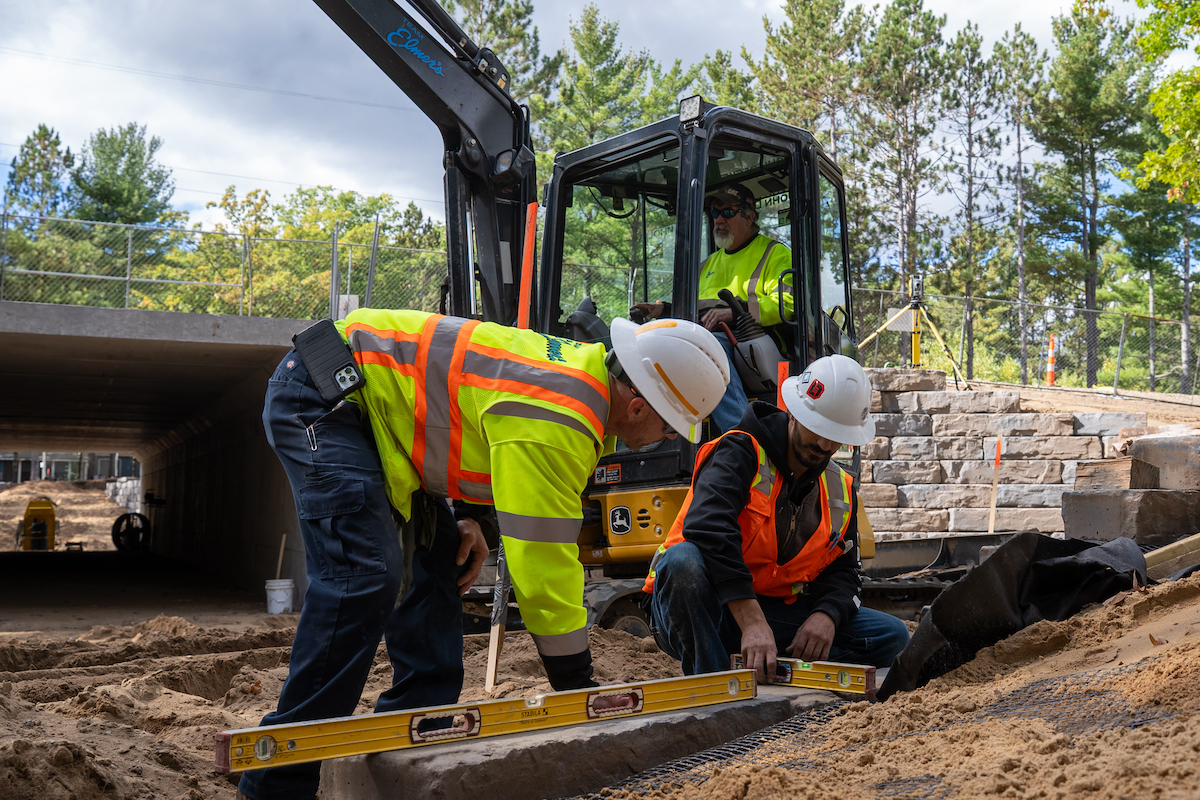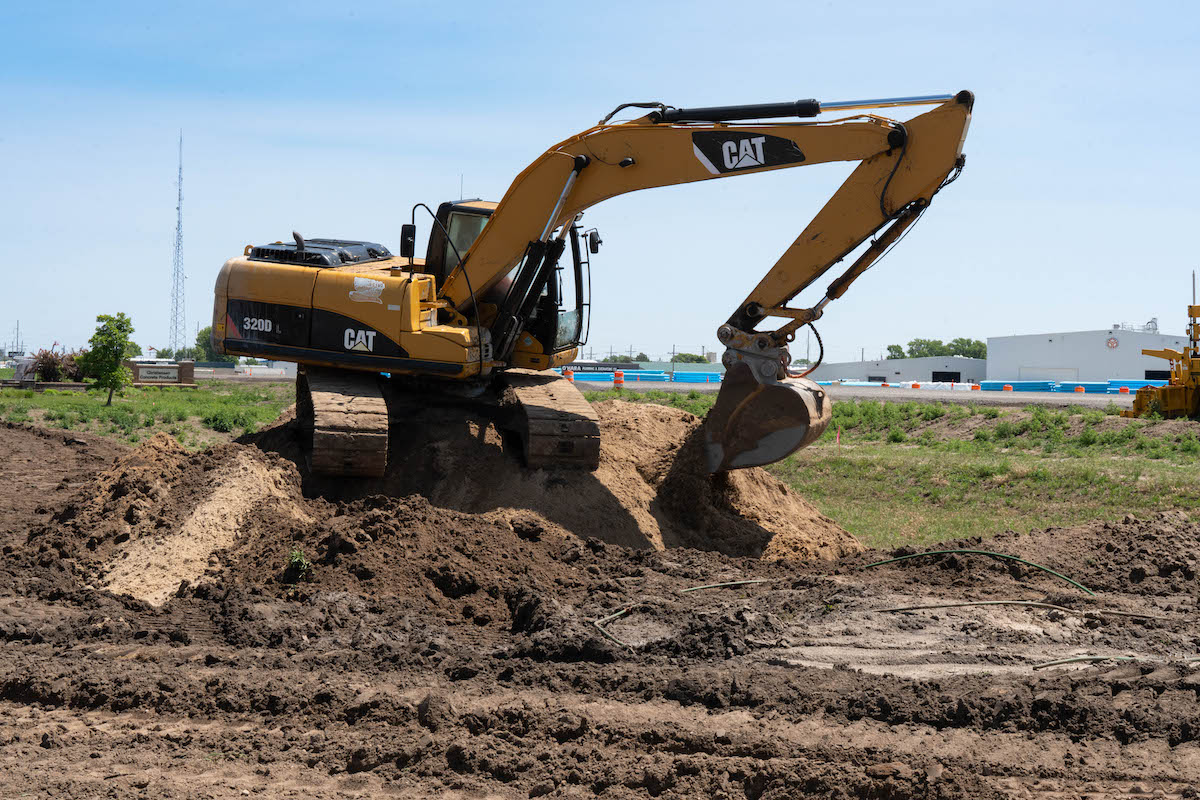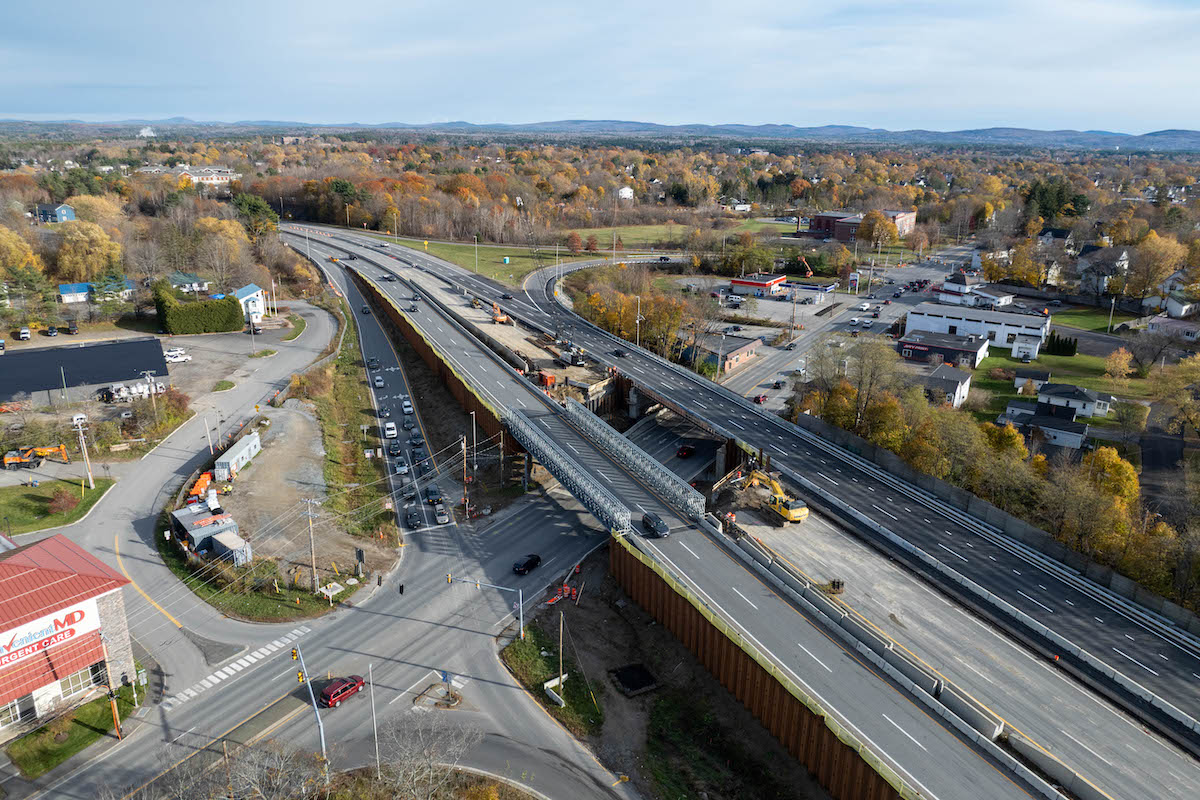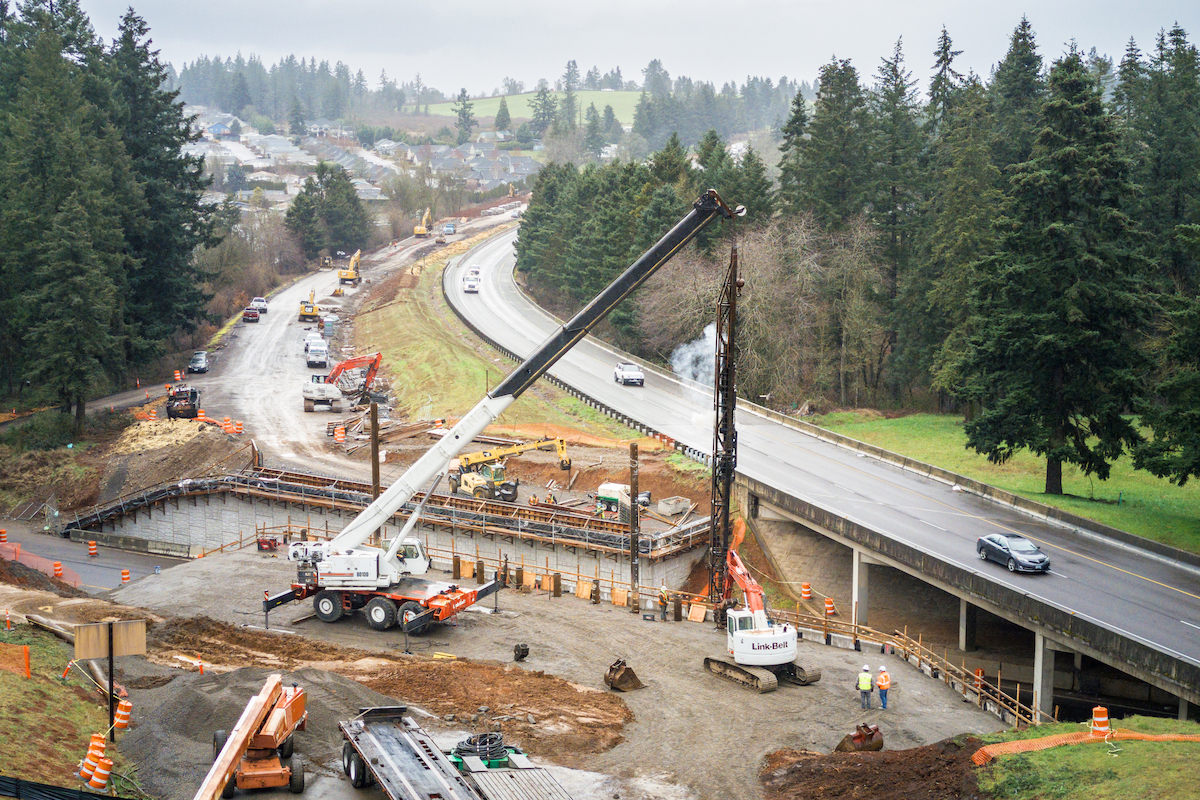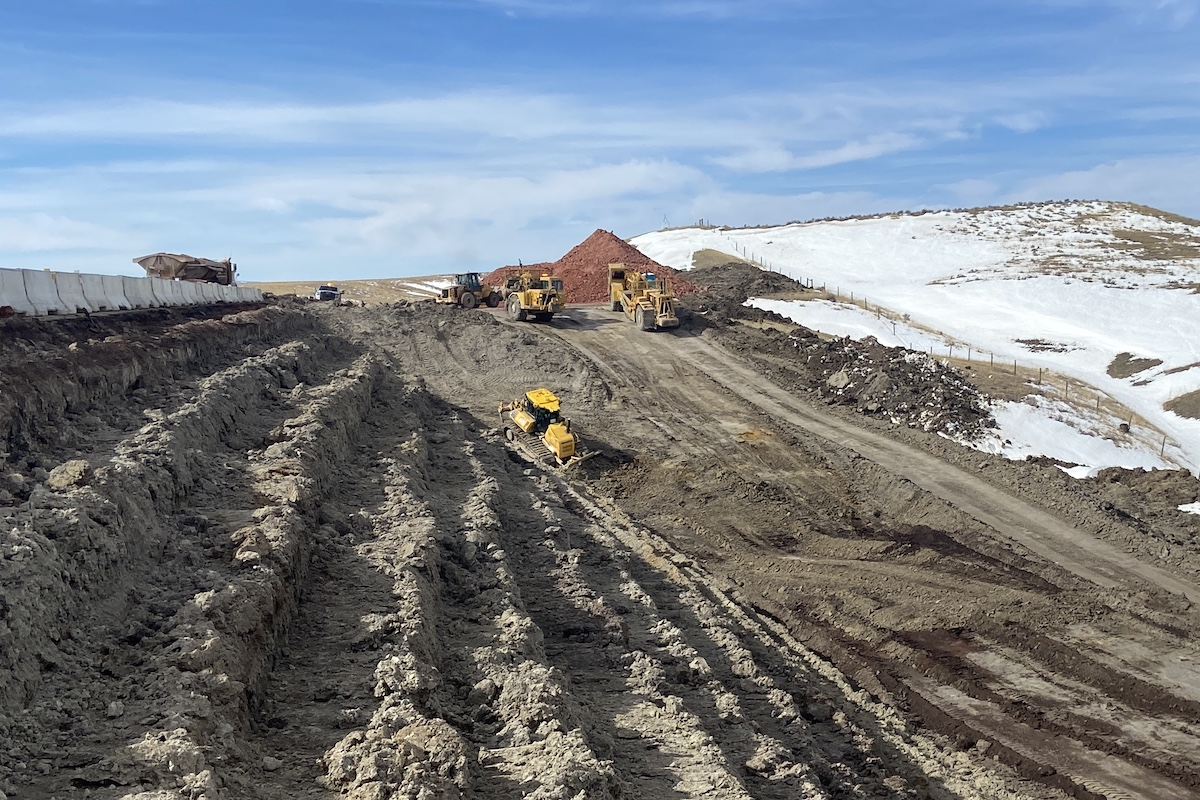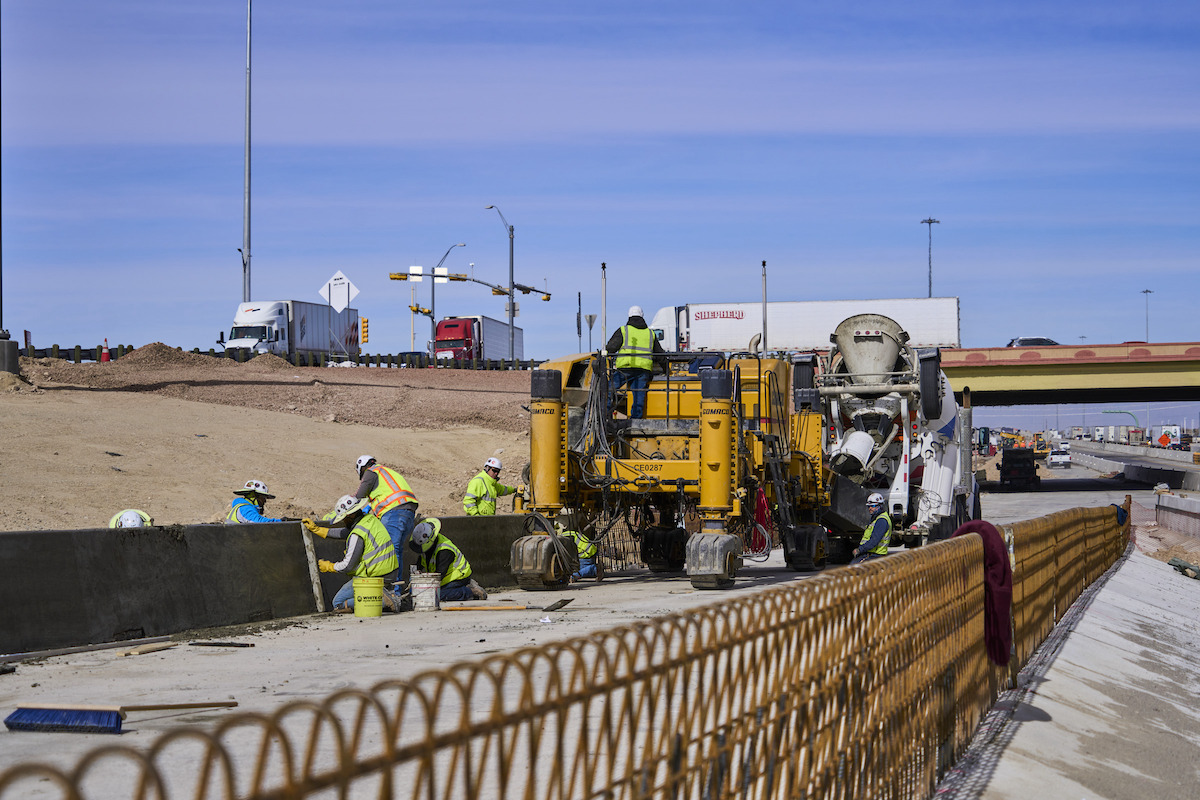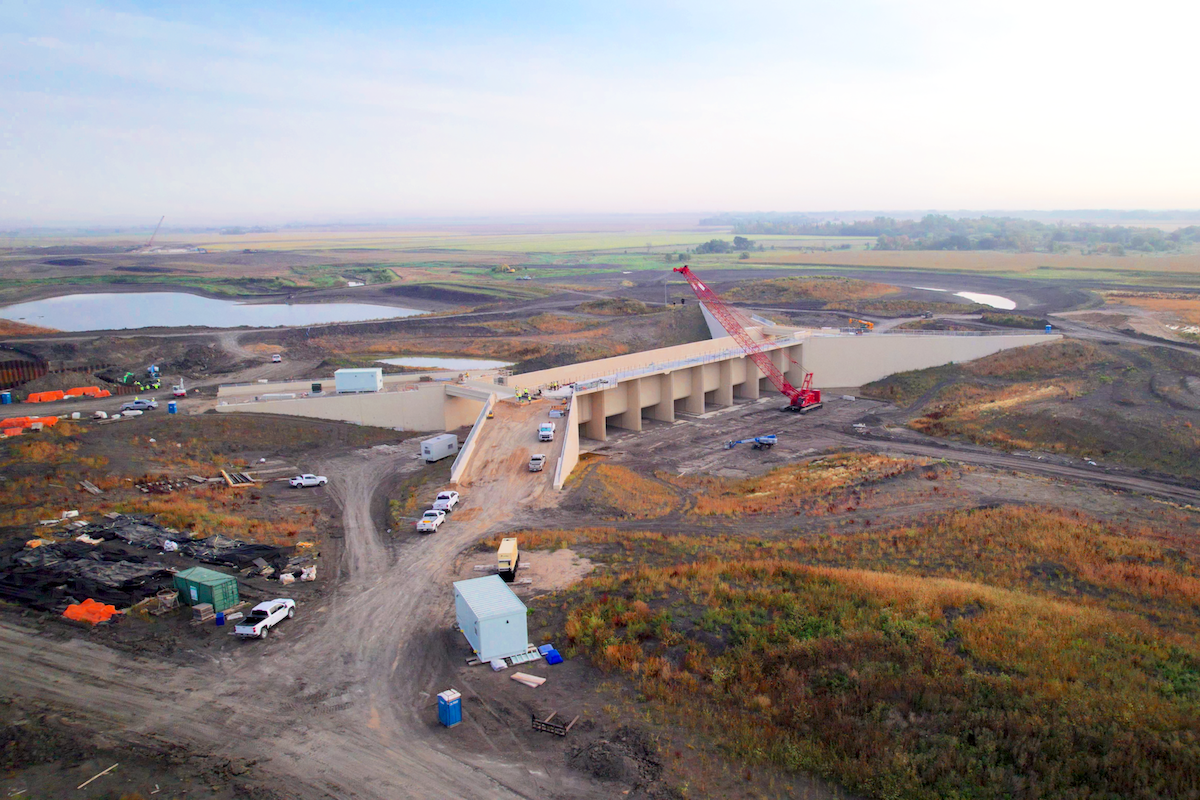The American River Bridge (ARB) connects eastern Sacramento, California, with the city's downtown area and carries the I-80 Business/Capital City Freeway over the American River. The 30-mile-long American River flows from the Sierra Nevada mountain range south to Sacramento, where it meets the Sacramento River.
The ARB was constructed in 1954 as two separate parallel bridges. In 1966, it underwent a center widening. The 1,891-foot six-lane steel girder bridge has a reinforced concrete deck, and the average daily traffic on the bridge is 177,200.
The California Department of Transportation (Caltrans) determined that the bridge had reached the end of its service life. This prompted the creation of the American River Bridge Rehabilitation Project, which is currently underway. American River Constructors (ARC), a joint venture of Granite Construction and California Engineering Contractors (CEC), is serving as the project's general contractor.
According to a document from Caltrans, the project is “needed due to the severity of the transverse and longitudinal deck cracks, concrete spalling, and high corrosive chloride content in the concrete deck surface. The bridge deck will continue to deteriorate and result in the need of emergency repairs if work is not done.”
Caltrans had already patched the bridge multiple times in many sections.

| Your local Gomaco dealer |
|---|
| Terry Equipment |
"The existing concrete decks were deteriorated and needed to be replaced," said Bob Mihal, a Senior Project Manager for Granite.
Bridge deck rehabilitations, an important process to extend the service life of a structure, are something Granite and CEC have performed many times.
According to a press release from Granite, the rehabilitation project will “replace the bridge deck, protect the abutments and piers from scour, and provide a multimodal connection between downtown and eastern Sacramento. The scope of work includes the removal and replacement of the existing concrete deck and steel girder post-tensioning systems in spans one and two, and the widening of the shoulder to accommodate traffic during construction. ARC will also construct a Class I bike path along the bridge that will connect to existing bike trails.”
Additionally, the joint venture will widen a smaller bridge structure, widen and strengthen an existing concrete box culvert, and add additional storage capacity to an existing pump station.

| Your local Trimble Construction Division dealer |
|---|
| SITECH Southwest |
| SITECH West |
During replacement of the bridge deck, Caltrans wanted to maintain full operations during construction. That is why the scope included building a new three-lane section parallel to the bridge before performing the work on the original bridge.
"Construction of the new three-lane bridge widening section is one of the larger aspects of the project," Mihal said.
Once the team completes the new section, they will close one half of the bridge and remove the deck. Upon completion of that half, they will close the other half.
Finally, the extra three lanes will become part of the bridge. They will be used to widen the shoulders to Caltrans standards and add on a Class I bike path that will connect to the existing American River bike path. The original six-lane bridge will be widened from 96 feet to 151 feet.

| Your local Gomaco dealer |
|---|
| Terry Equipment |
The entire bridge is either over water or within the flood plain. Working in the water meant coordinating with environmental agencies and the U.S. Army Corps of Engineers.
Chinook salmon spawn in the spring and fall, so the team has a limited “in-water work window” of when they are allowed to perform ground-disturbing activity within the river. That window runs from June 1 to October 15.
Mihal said the limited work window spurred the team to find innovative solutions. He noted the team usually uses a trestle when they work in the water but decided against it for two reasons.
"It takes lots of time to install a trestle — a whole season,” he said. “It also impacts waterways."

| Your local Gomaco dealer |
|---|
| Terry Equipment |
The trestle is also not very mobile. Moving it is a time-consuming process.
The Folsom Dam, which was created in the 1950s, is on the American River. Between the dam and the confluence with the Sacramento River, the water levels in the area can shift dramatically from season to season.
In 2023, California experienced severe storms that resulted in significant flooding. This section of the American River had a 25-foot vertical difference from the fall season. While this was extreme, the typical variability of elevation of this river during the winter and spring is also significant.
The potential dramatic differences in water levels also factored into the team's decision to avoid using trestles.

| Your local Gomaco dealer |
|---|
| Terry Equipment |
Mihal said that instead of trestles, the ARC team “used floating barges, which are easy to assemble and disassemble and could be removed from the river within 48 hours. The trestles would take approximately one month to move out of the river. This decision proved to be an important one in the flooding event of 2023."
The team had a large lift the first season and was successful in performing all the cofferdam and pile driving installation during the first in-water work window. The team was permitted to work from barges and within the dewatered cofferdams outside of this window, which allowed them to progress on the concrete footings and piers through the winter.
ARC built most of the foundation work with the floating barges, including setting the girders.
Due to the limited water depths during the fall, the team also needed to dredge a portion of the river to increase the depth. The material recovered from the dredging of the river was used to build fills on the project, which meant less material was hauled to and from the site.

| Your local Gomaco dealer |
|---|
| Terry Equipment |
Faced with the challenge of assembling the bridge over the waterway, the team turned to technology — Building Information Modeling (BIM).
"We developed BIM models to survey and set our points," Mihal said. "We shared and confirmed the points with the manufacturers, so there [are] no misalignments of the girders."
This made the process move forward smoothly with minimal rework.
According to Mihal, knowing that everything is in the correct location has been critical to the success of the project. It has allowed the team to make operational decisions that reduce time and save money.

| Your local Gomaco dealer |
|---|
| Terry Equipment |
The American River Bridge is being delivered via the construction manager/general contractor (CM/GC) model. The general contractor acts as the construction manager and is part of the team during the design and planning phases.
“The CM/GC process allowed us to work directly with the designers to enhance constructability and innovation,” said Steve Lynch, an Assistant Project Manager with Granite, responsible for oversight of construction activities. “Our environmental team worked directly with Caltrans’ environmental team and the multiple permitting agencies to get this project fully permitted in record time. Thanks to the rapid permitting and through the use of early procurement contracts, we were able to start construction a full two years earlier than original schedules showed.”
The ARC joint venture is a 70/30 partnership, with Granite in the lead. Lynch said that CEC is “a uniquely qualified partner to Granite for this project, based on their experience with marine construction and bridge rehabilitation.”
The team needed to be assembled early in the process to create a proposal that included innovations, since it was part of the selection process. The barge was part of the proposal.

| Your local Gomaco dealer |
|---|
| Terry Equipment |
The project has a budget of $235 million. The federal government provided $188 million, and the state provided funds via Senate Bill 1. The law dates back to spring 2017, when the California Legislature approved a $5.4 billion annual investment for infrastructure.
The project is on budget, which Lynch credits to the CM/GC model.
"Because we were part of the preconstruction planning, we understand the risks involved and developed mitigation strategies and have viable solutions before construction began," he said.
The team began construction on the project in spring 2022. Construction is scheduled to conclude in summer 2026. The project is on schedule, which Lynch also credits to the CM/GC.

| Your local Gomaco dealer |
|---|
| Terry Equipment |
“The partnering on the project has allowed us to keep the project moving forward,” he said. “We've collaborated extremely well with Caltrans and our subcontractors and kept issues at a minimum.”
Upon completion of the project, the life of the bridge will be extended. It will also be safer and offer greater shoulder widths. The new bike path will connect to existing bike paths and will enable people to use alternative travel modes.
- Owner/Designer/Engineer: California Department of Transportation
- General Contractor: Granite, Watsonville, California; California Engineering Contractors Inc., Pleasanton, California
- Other Key Contractors: Jarrett Foundations, McClellan Park, California; Alta Group, San Francisco, California; Austin Enterprises, Bakersfield, California; Studebaker Electric, Loomis, California

